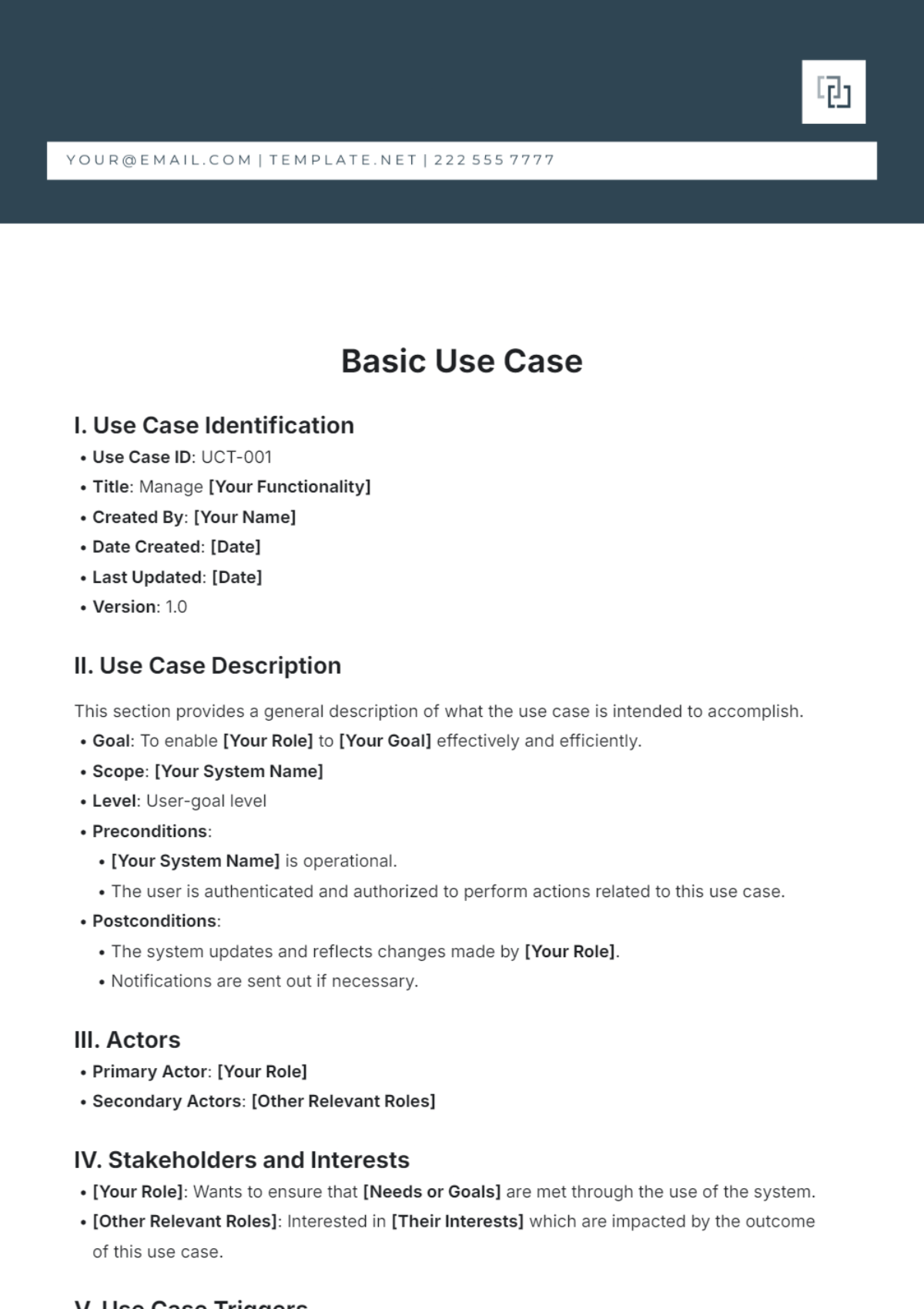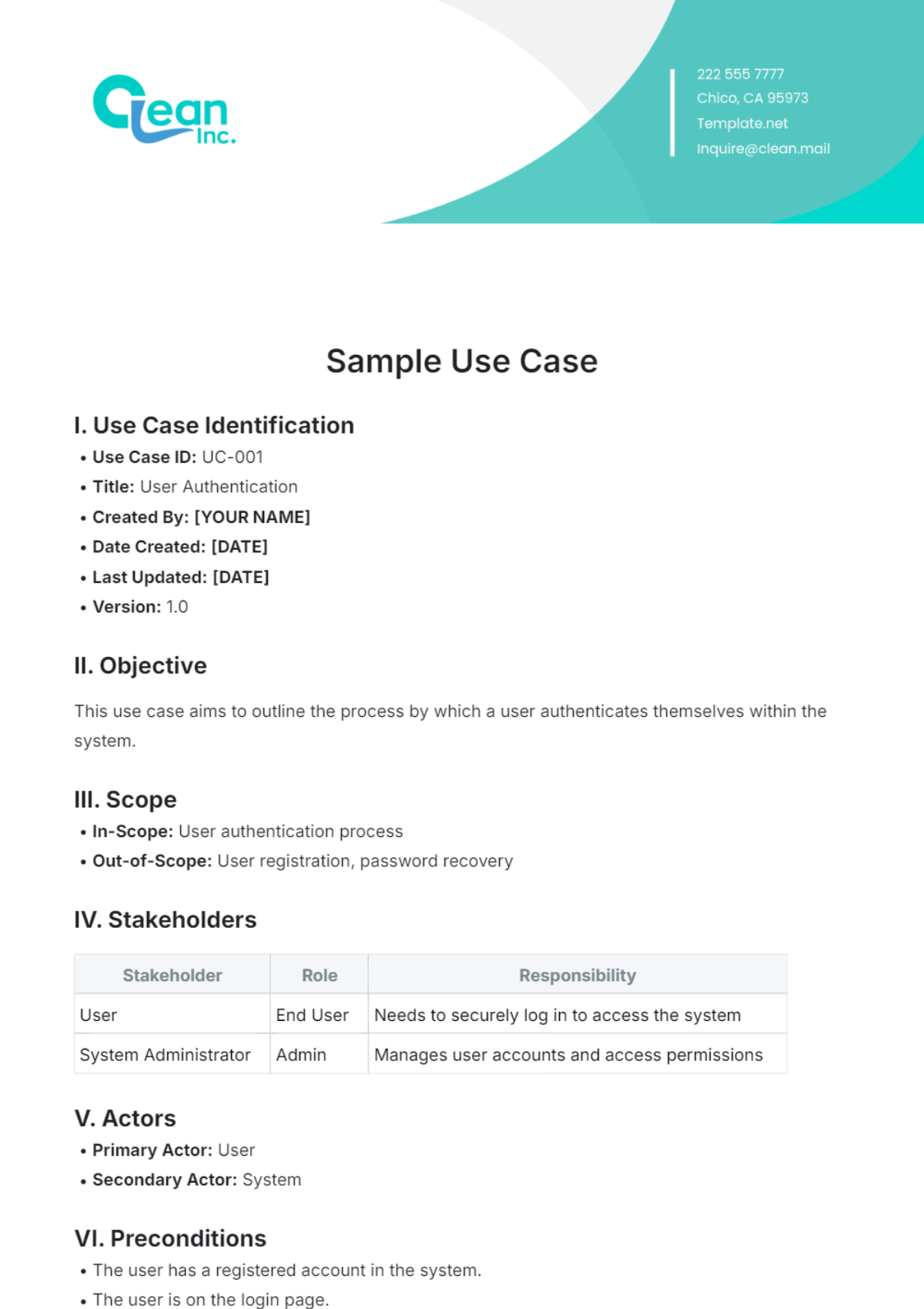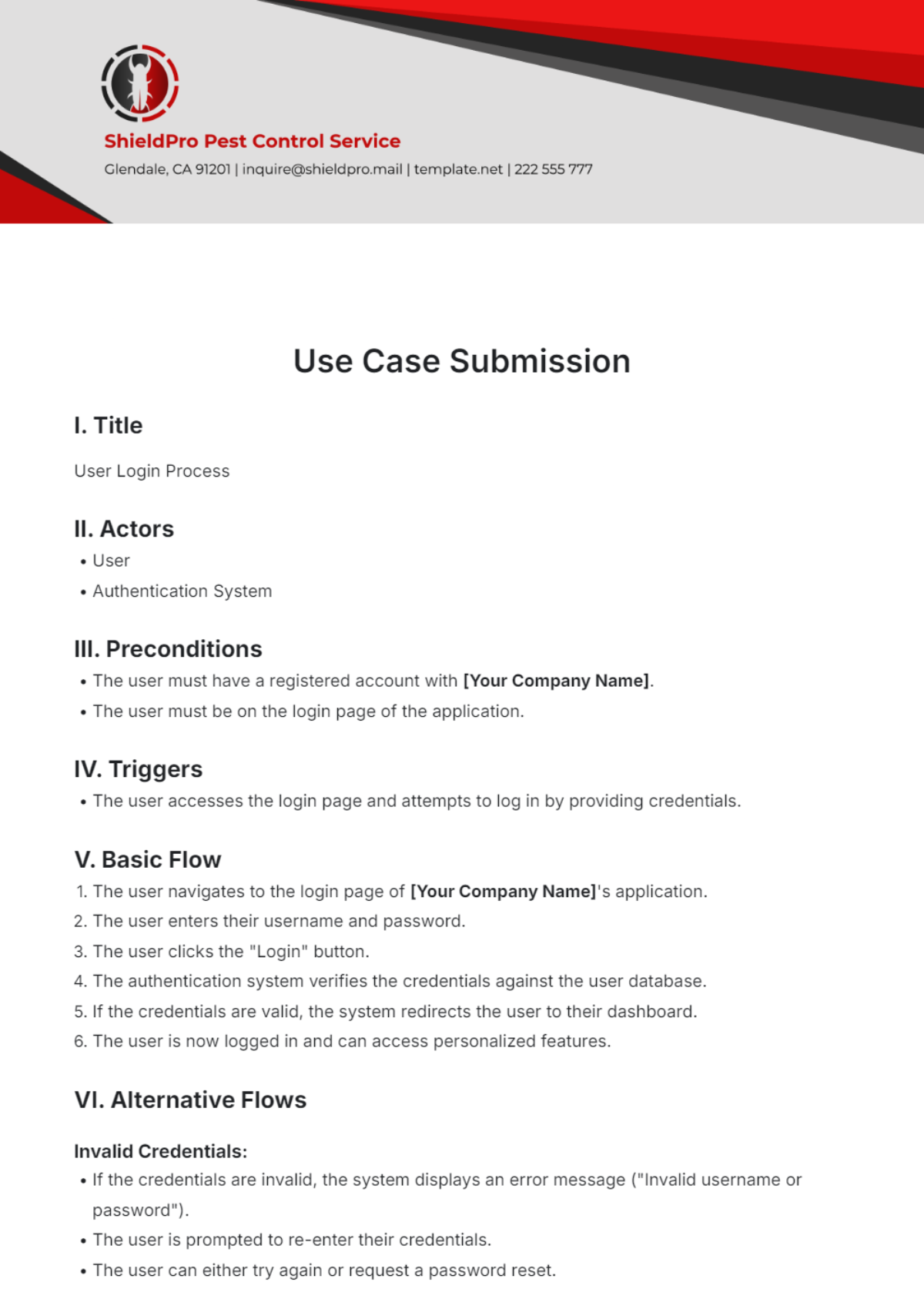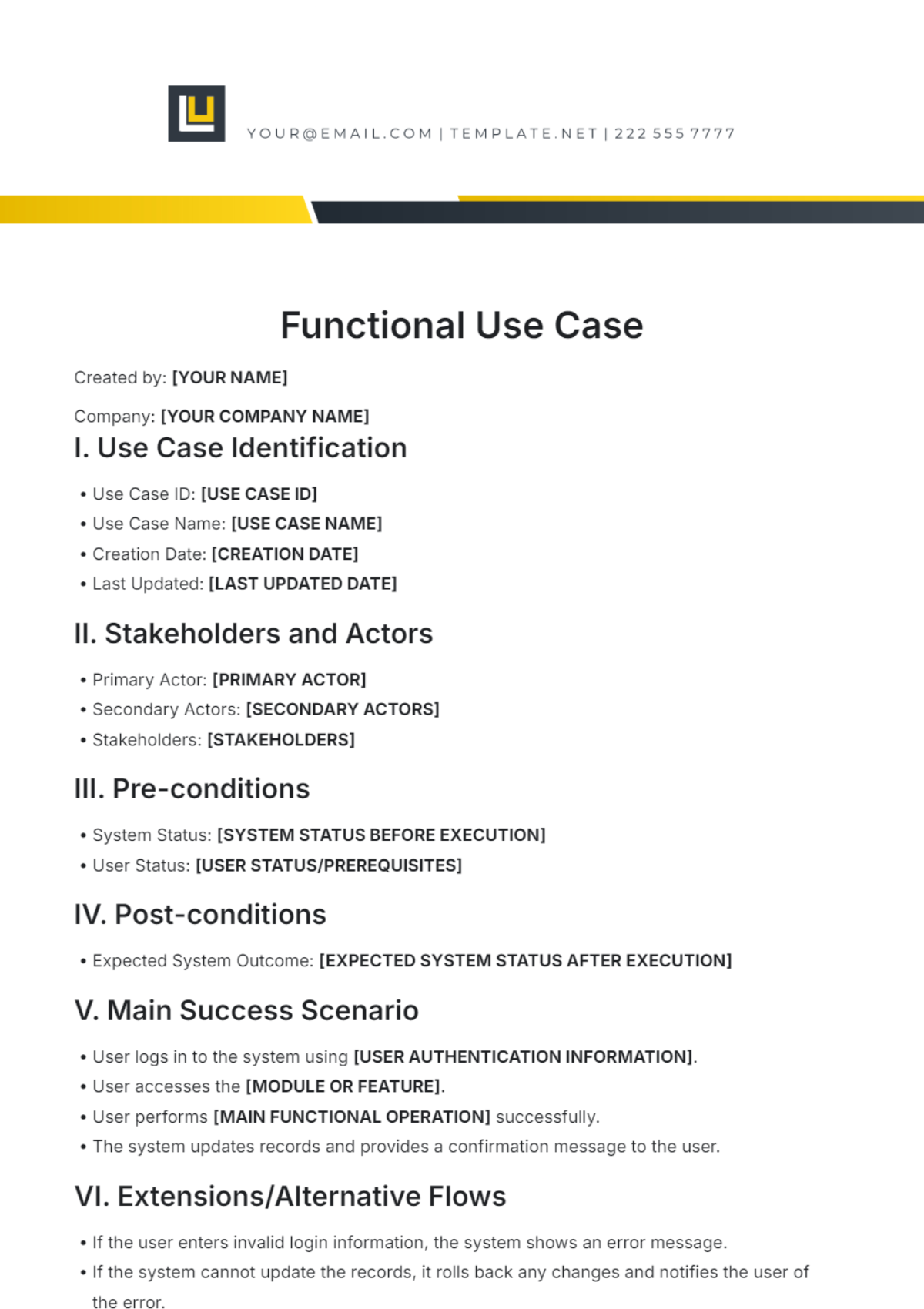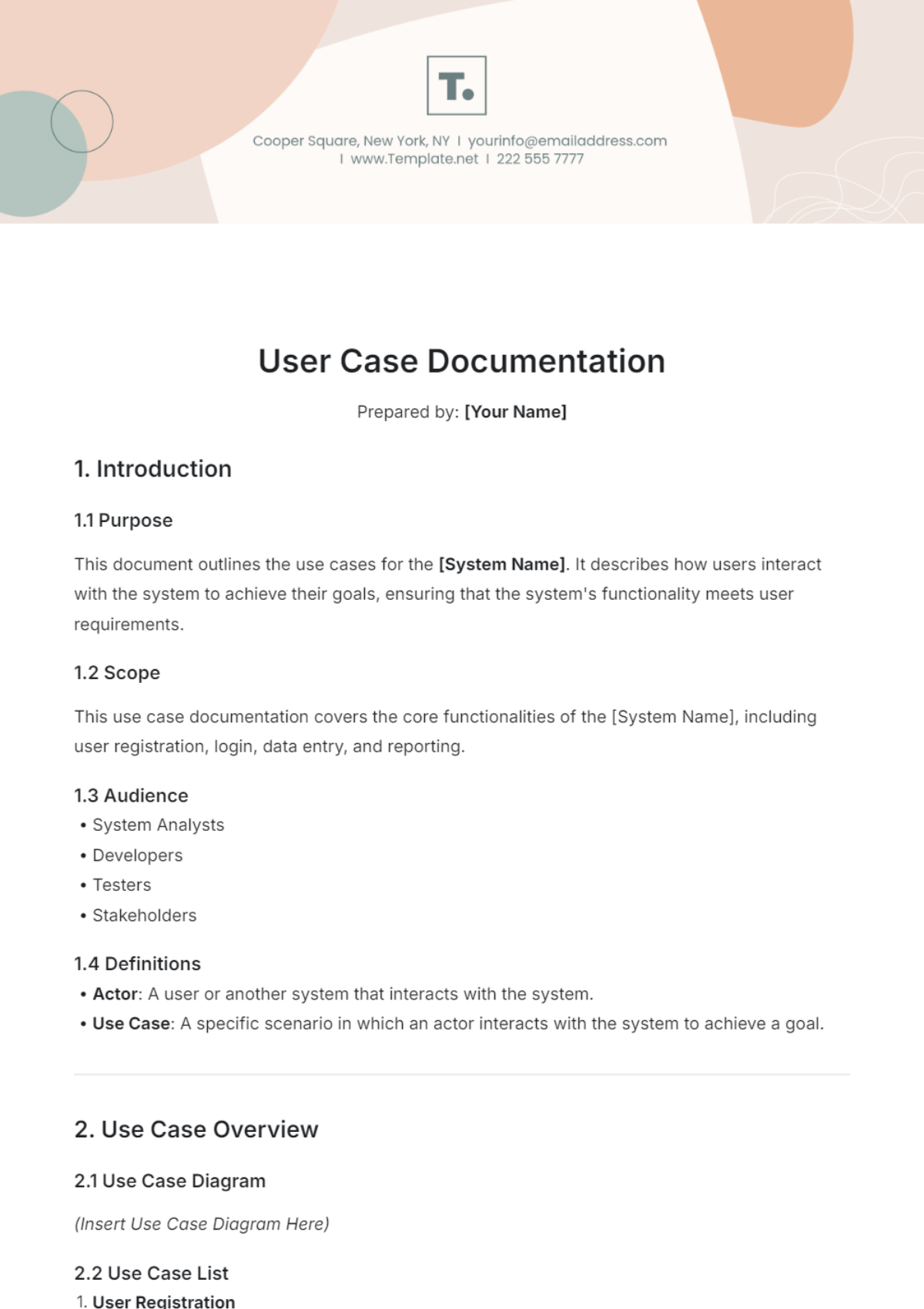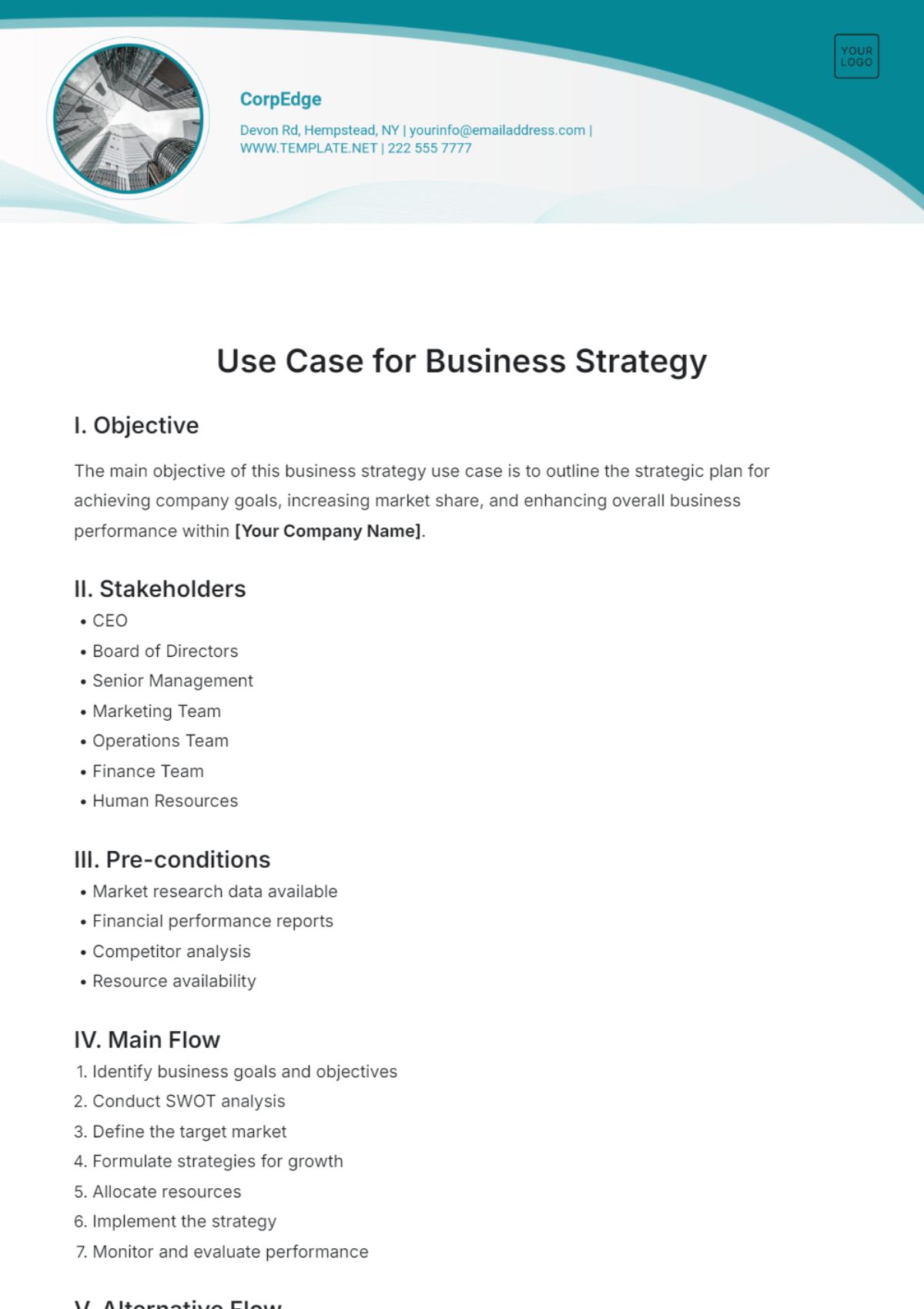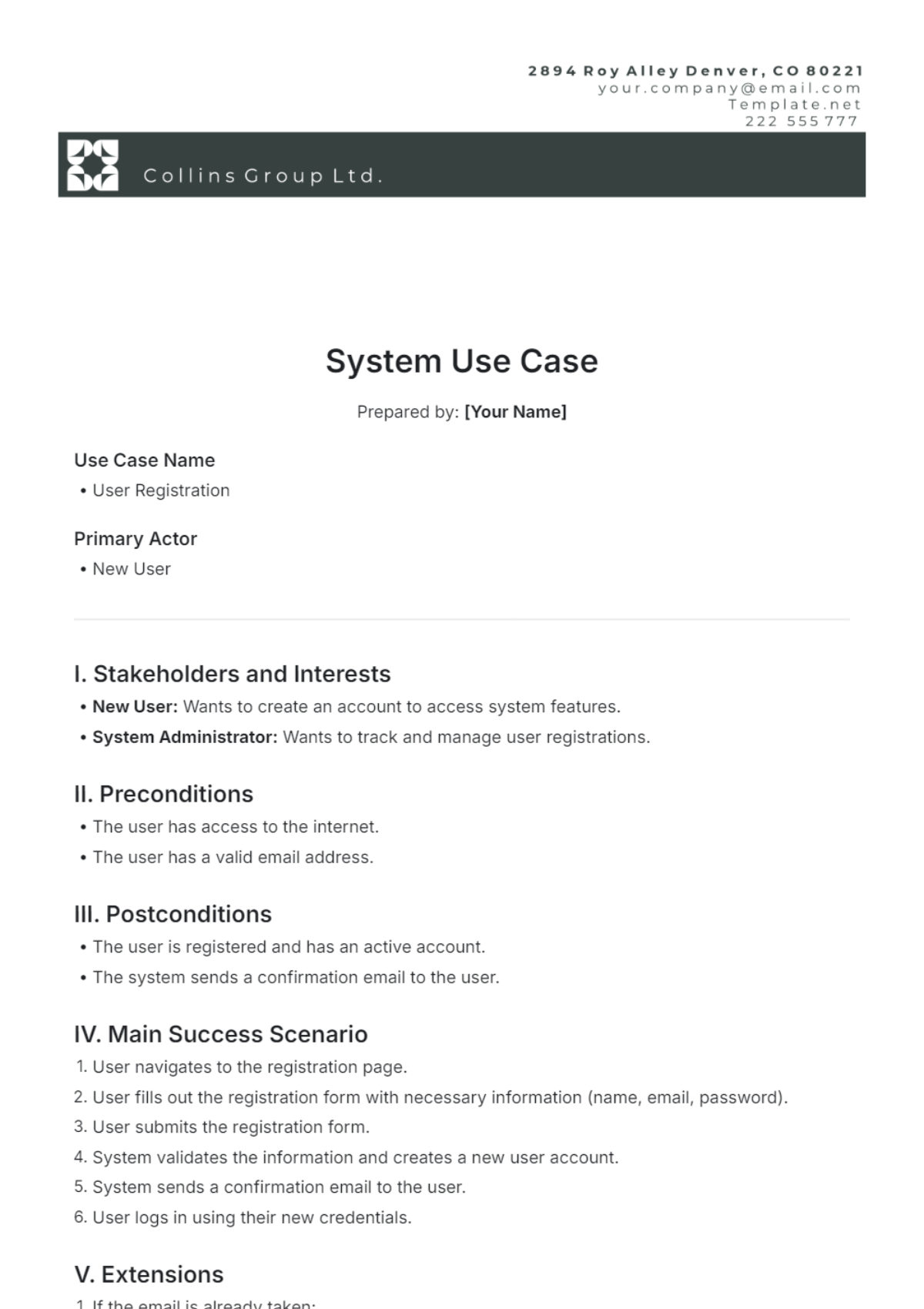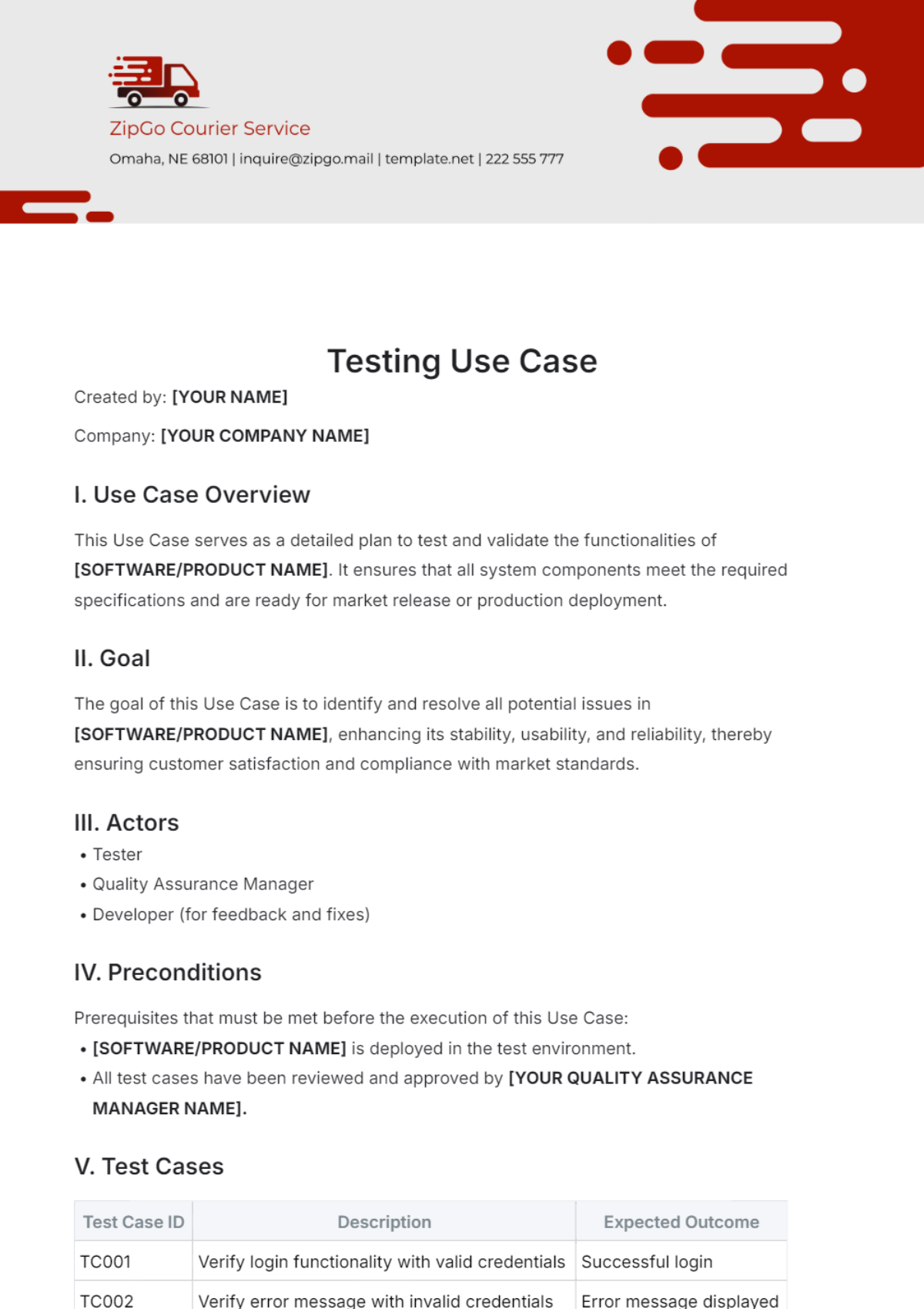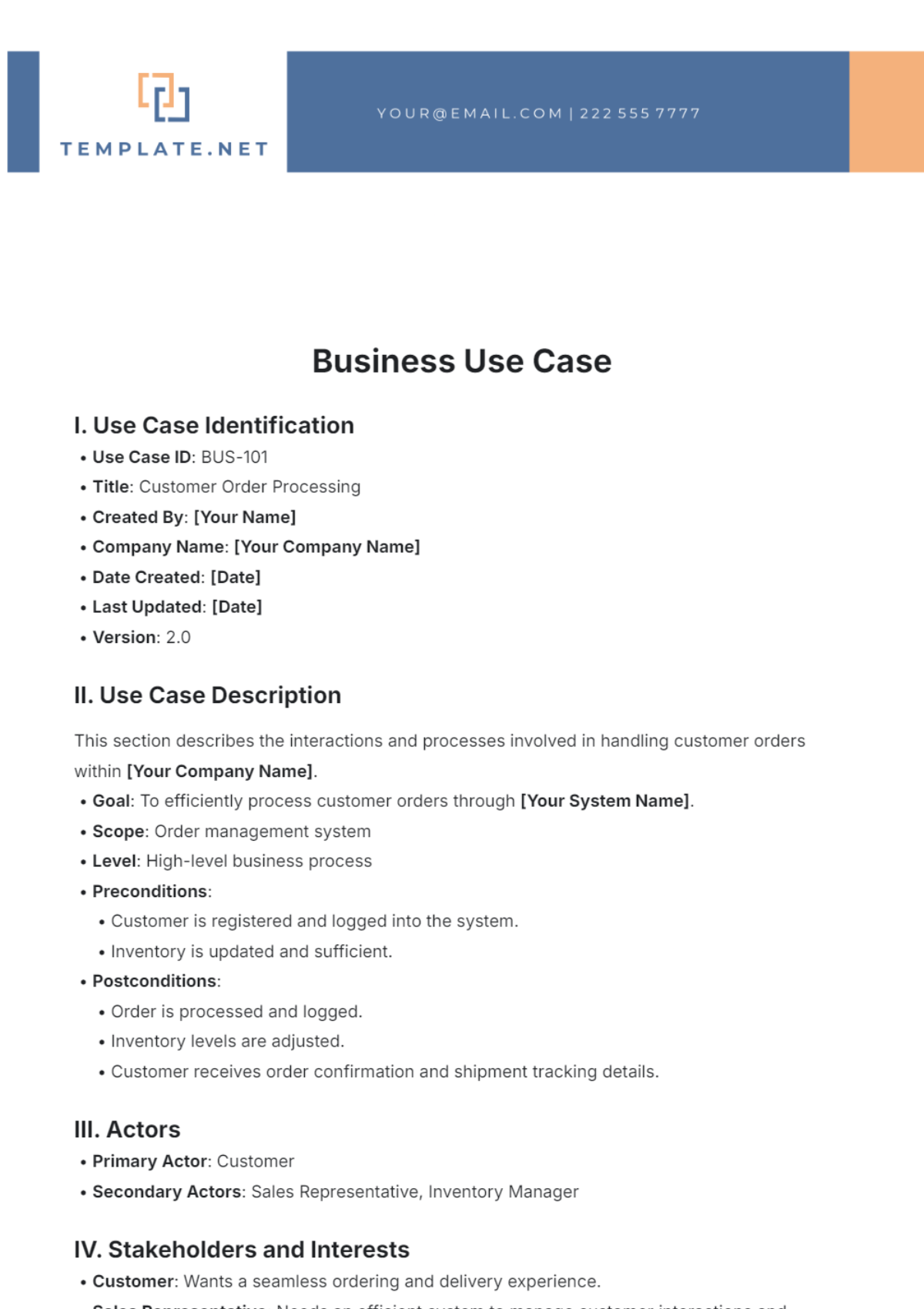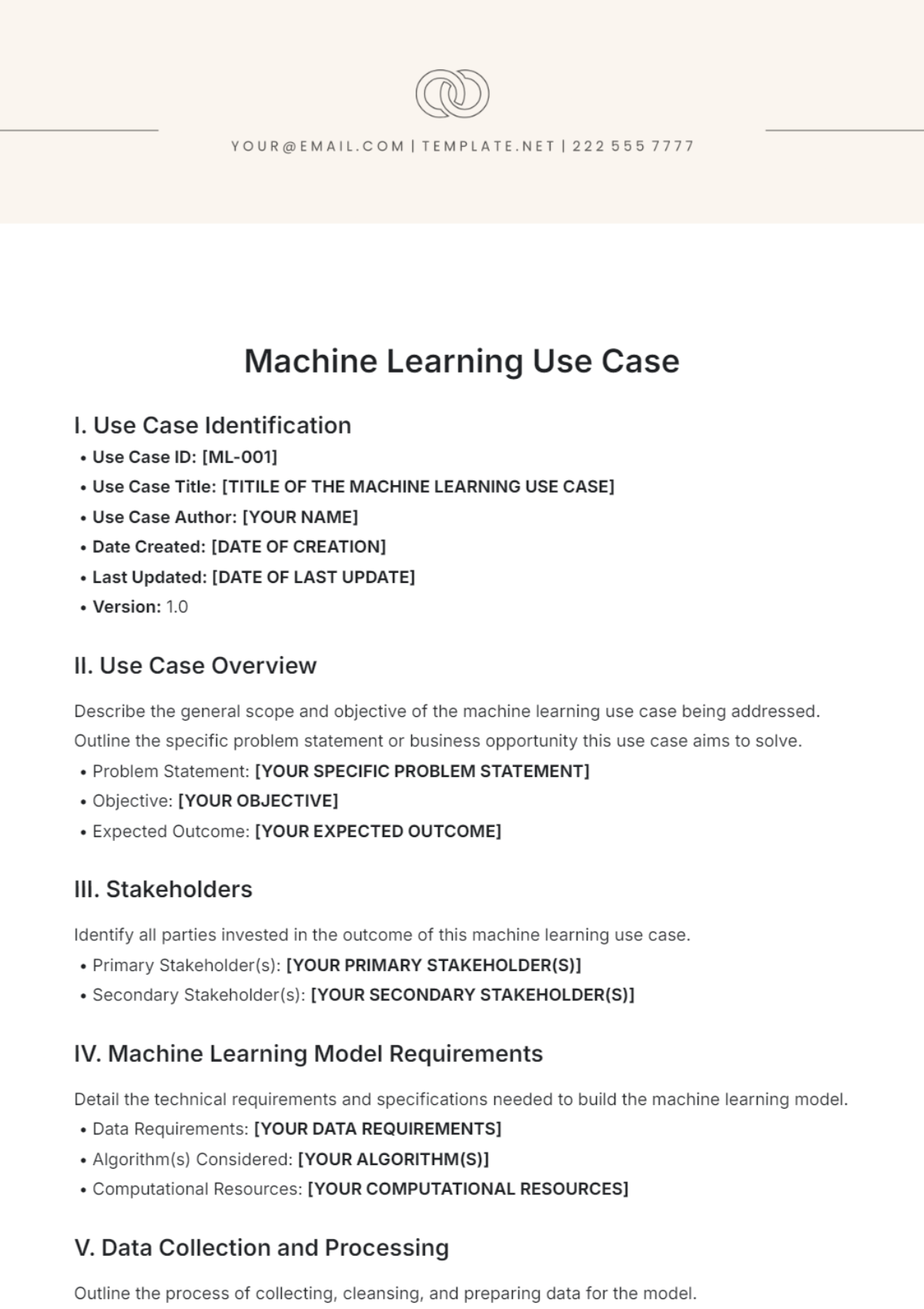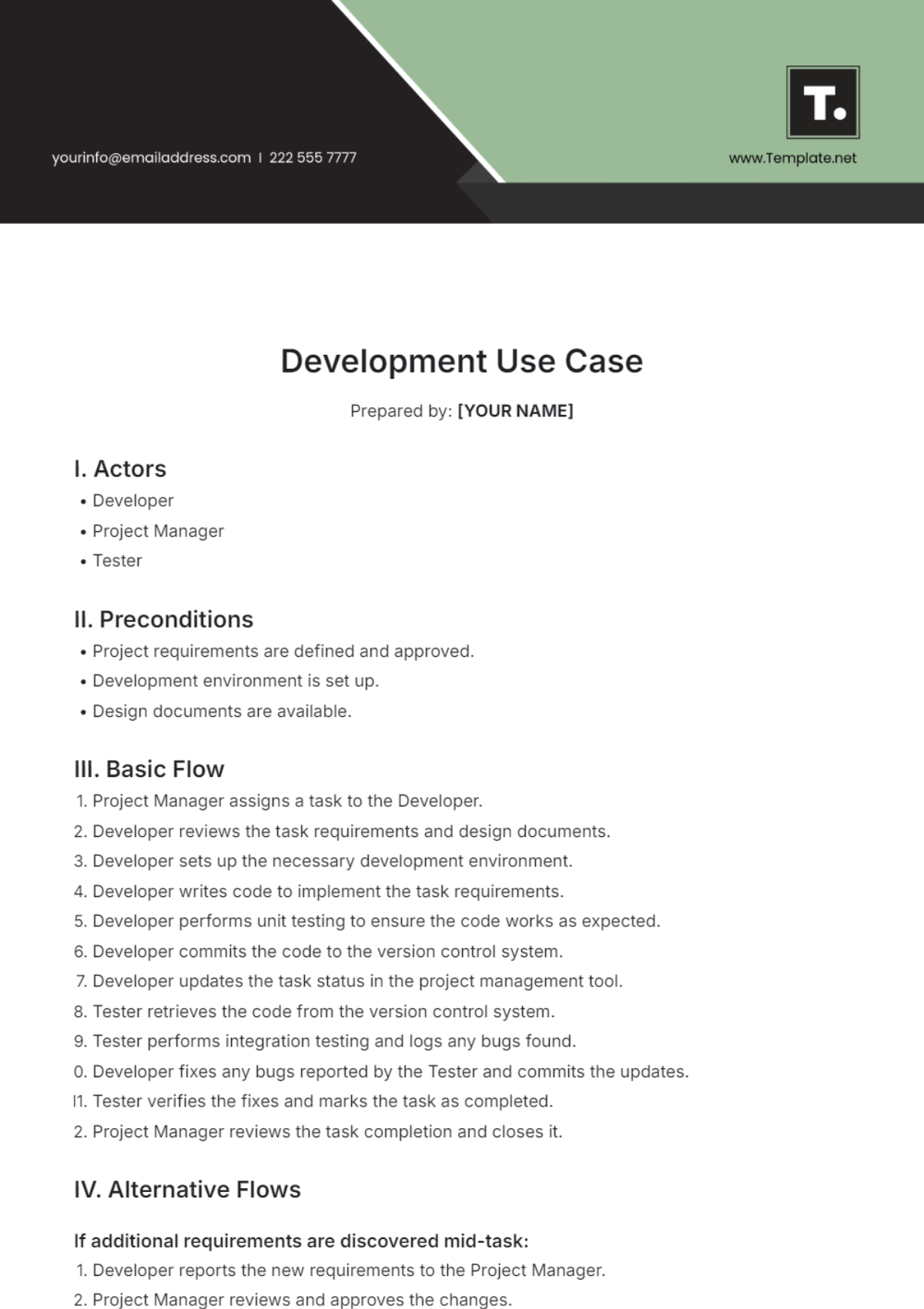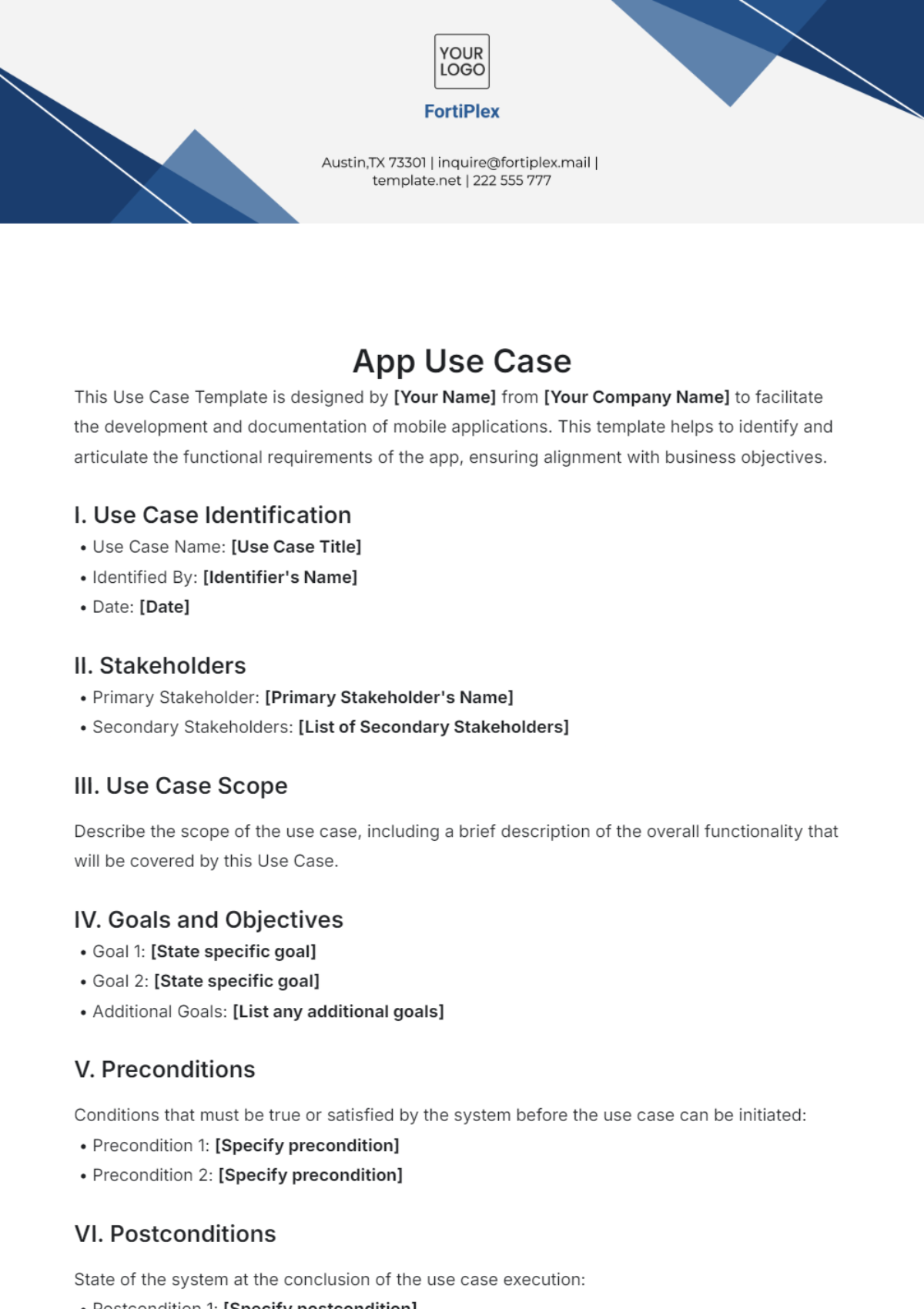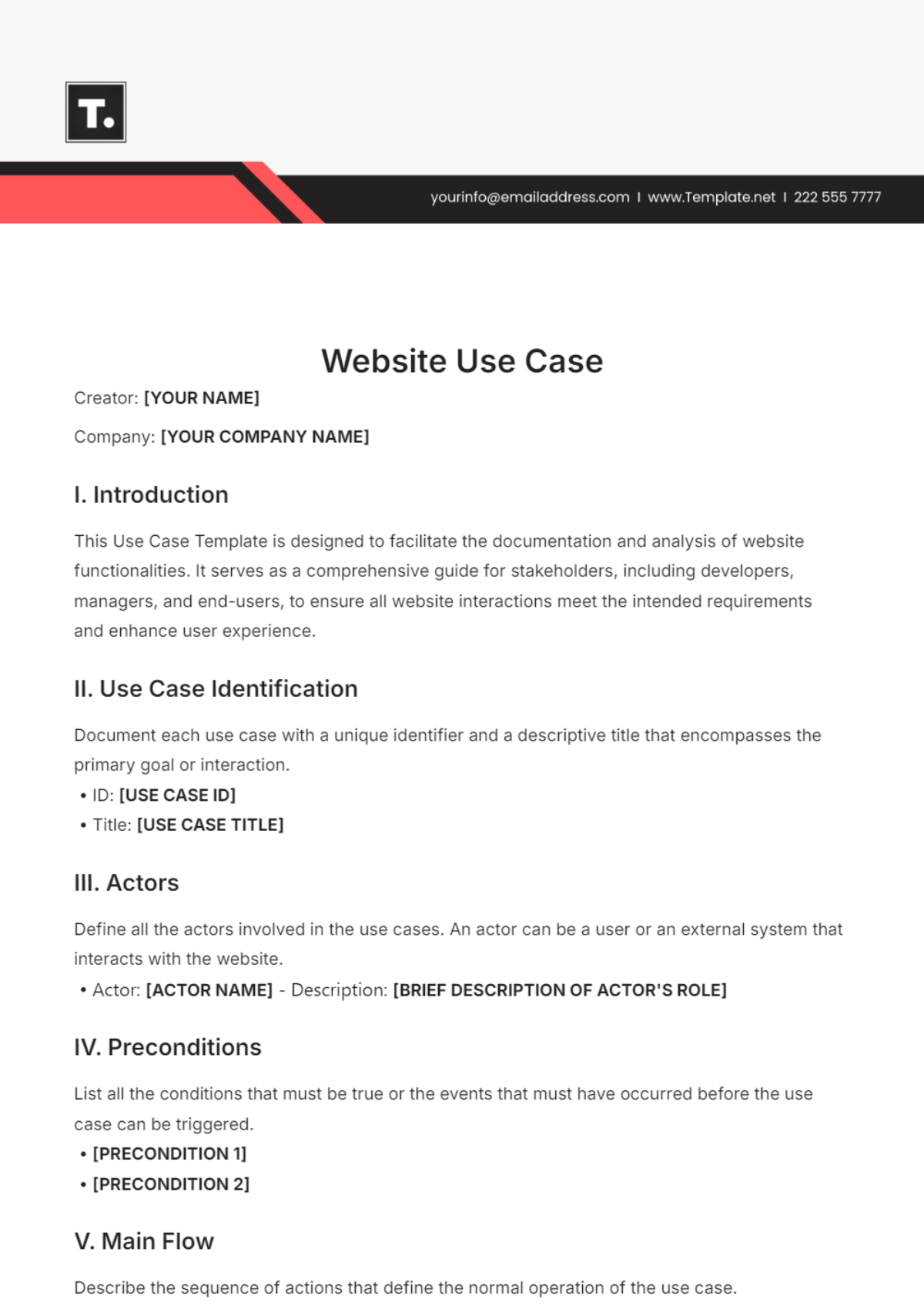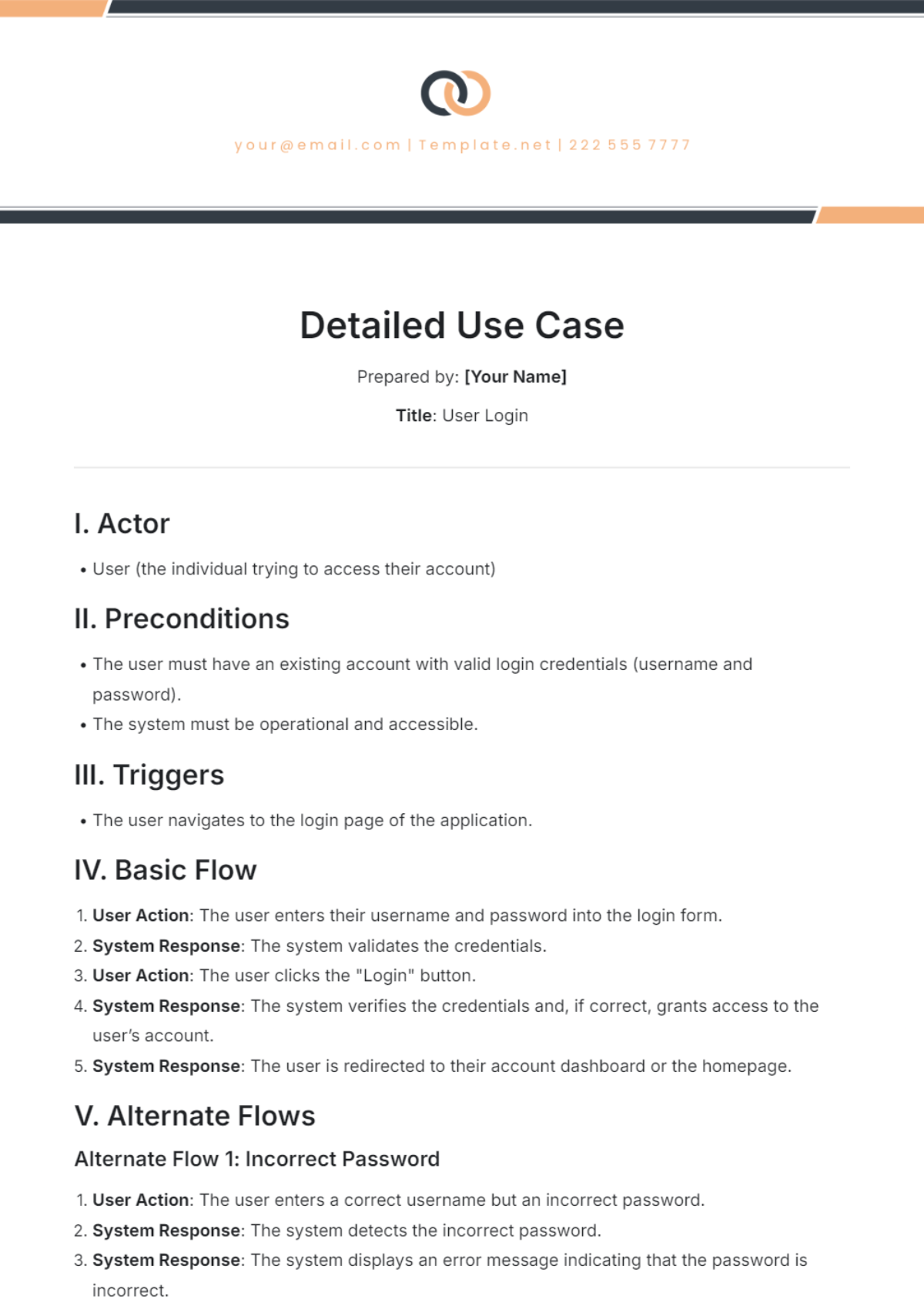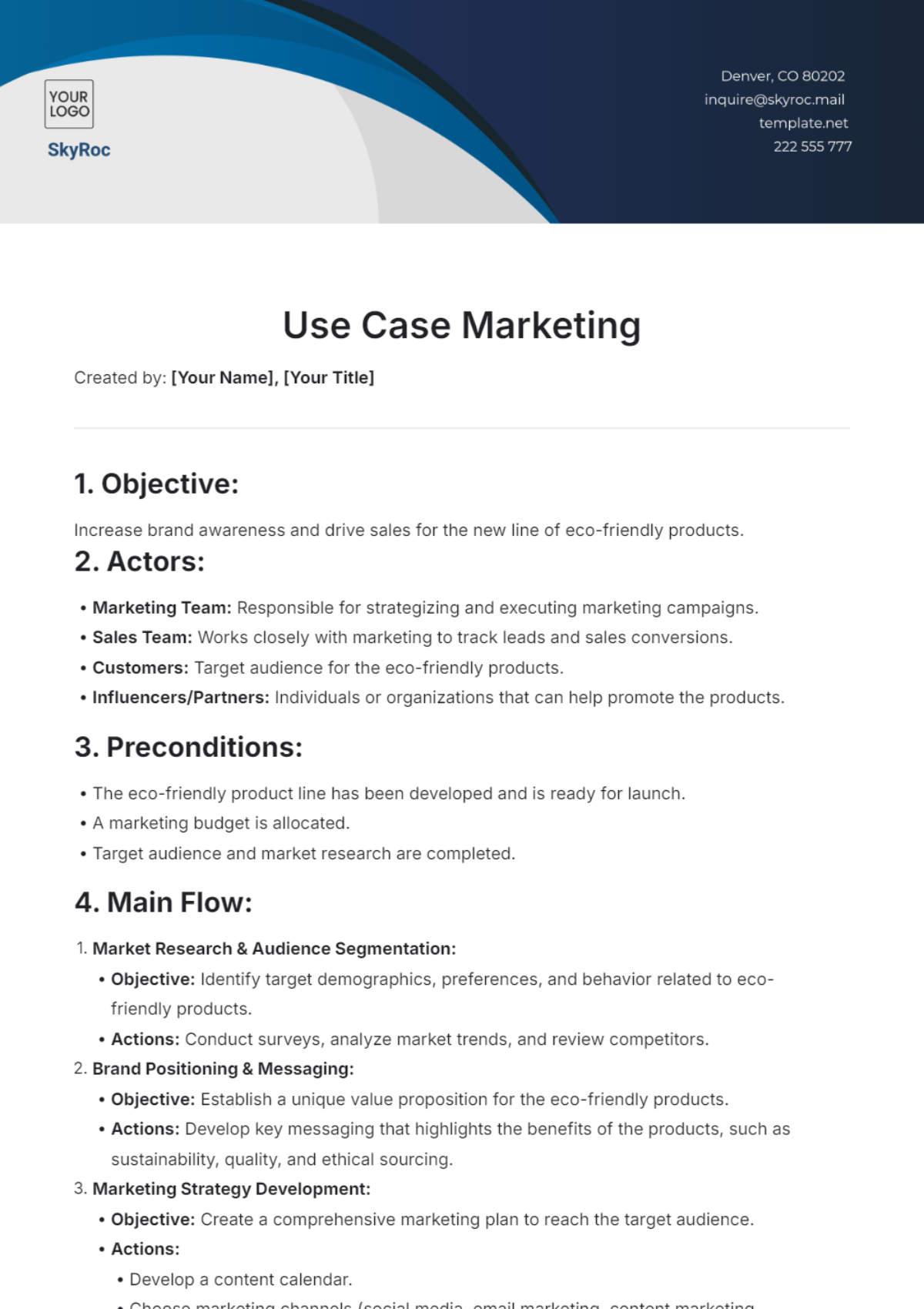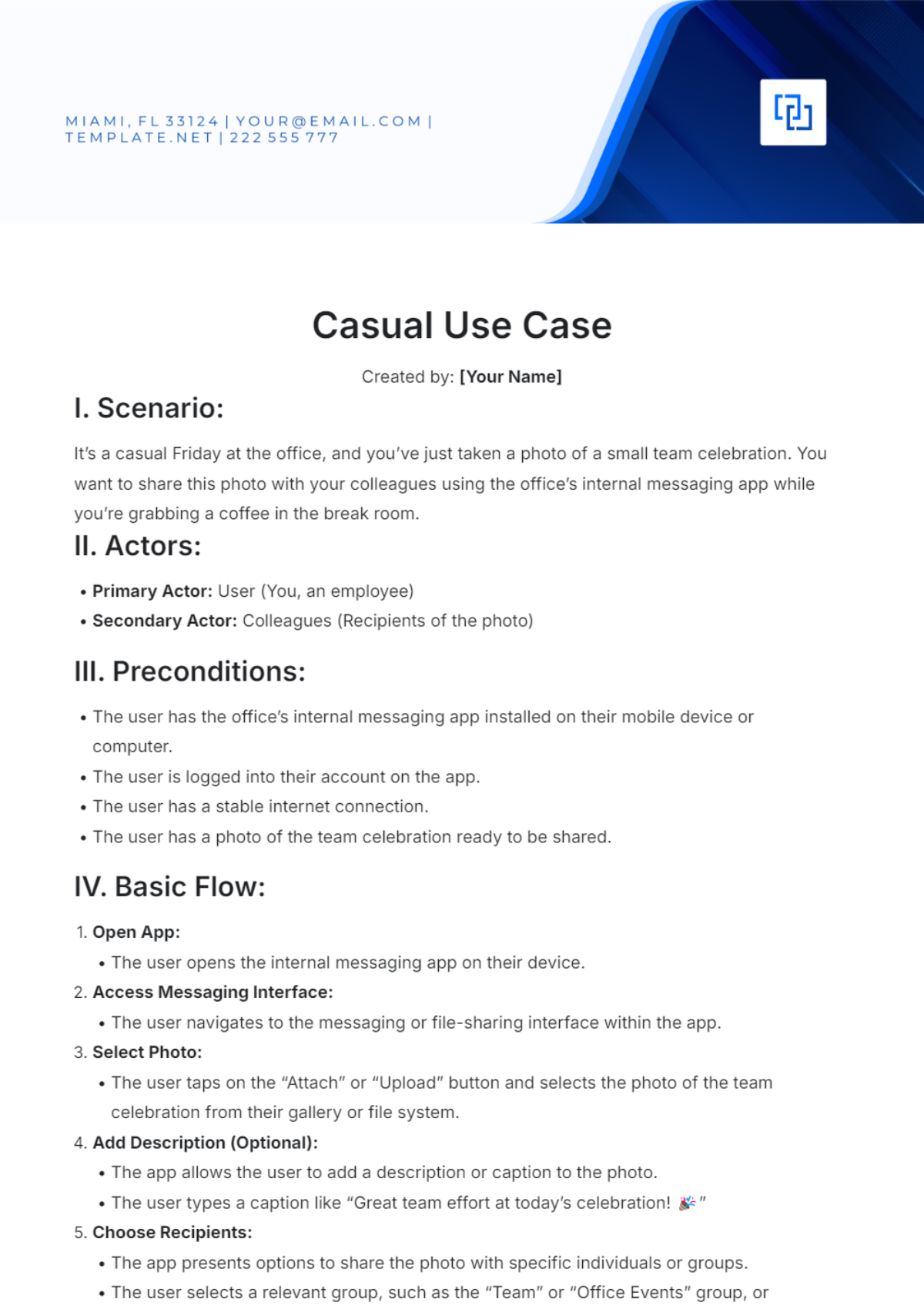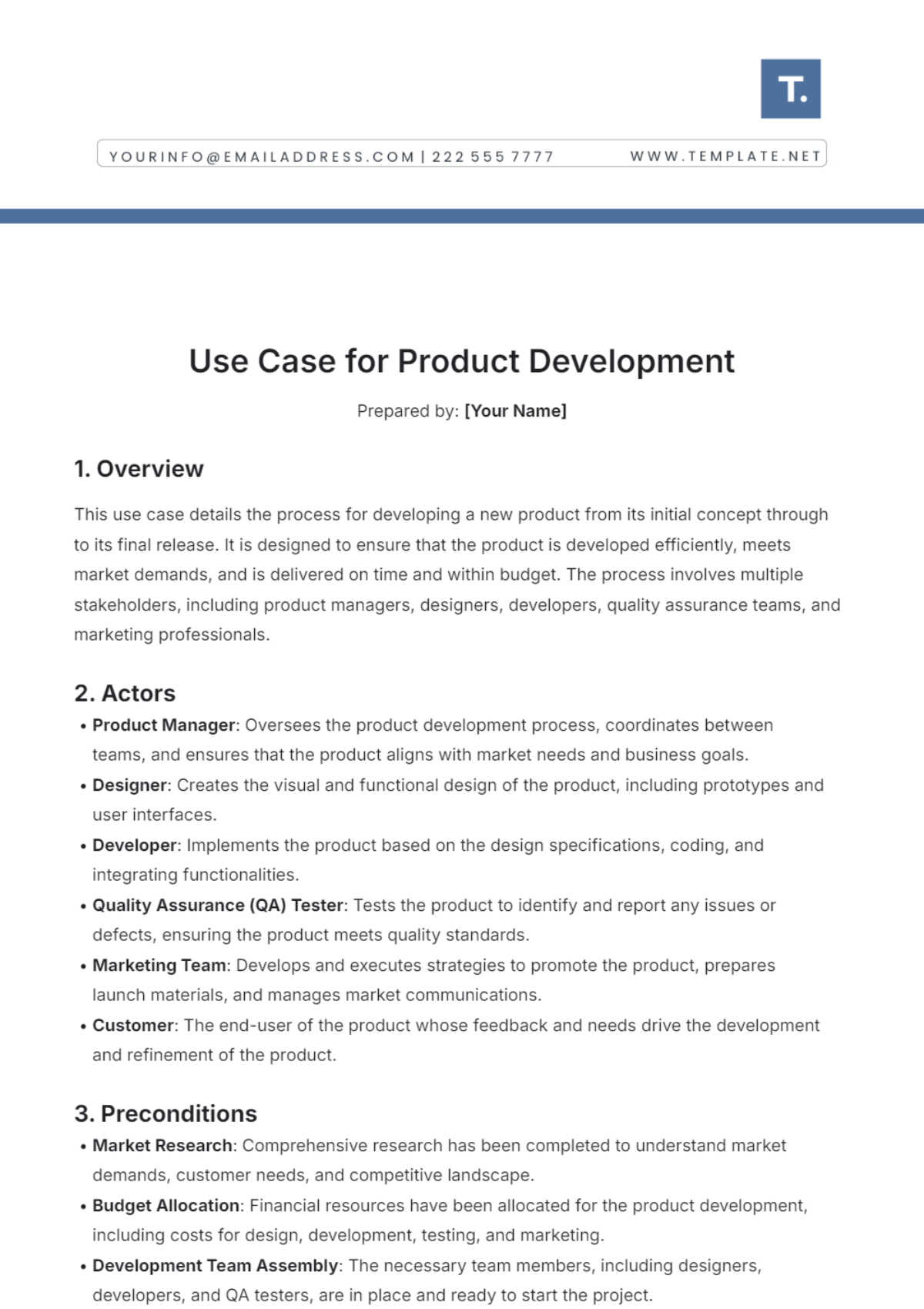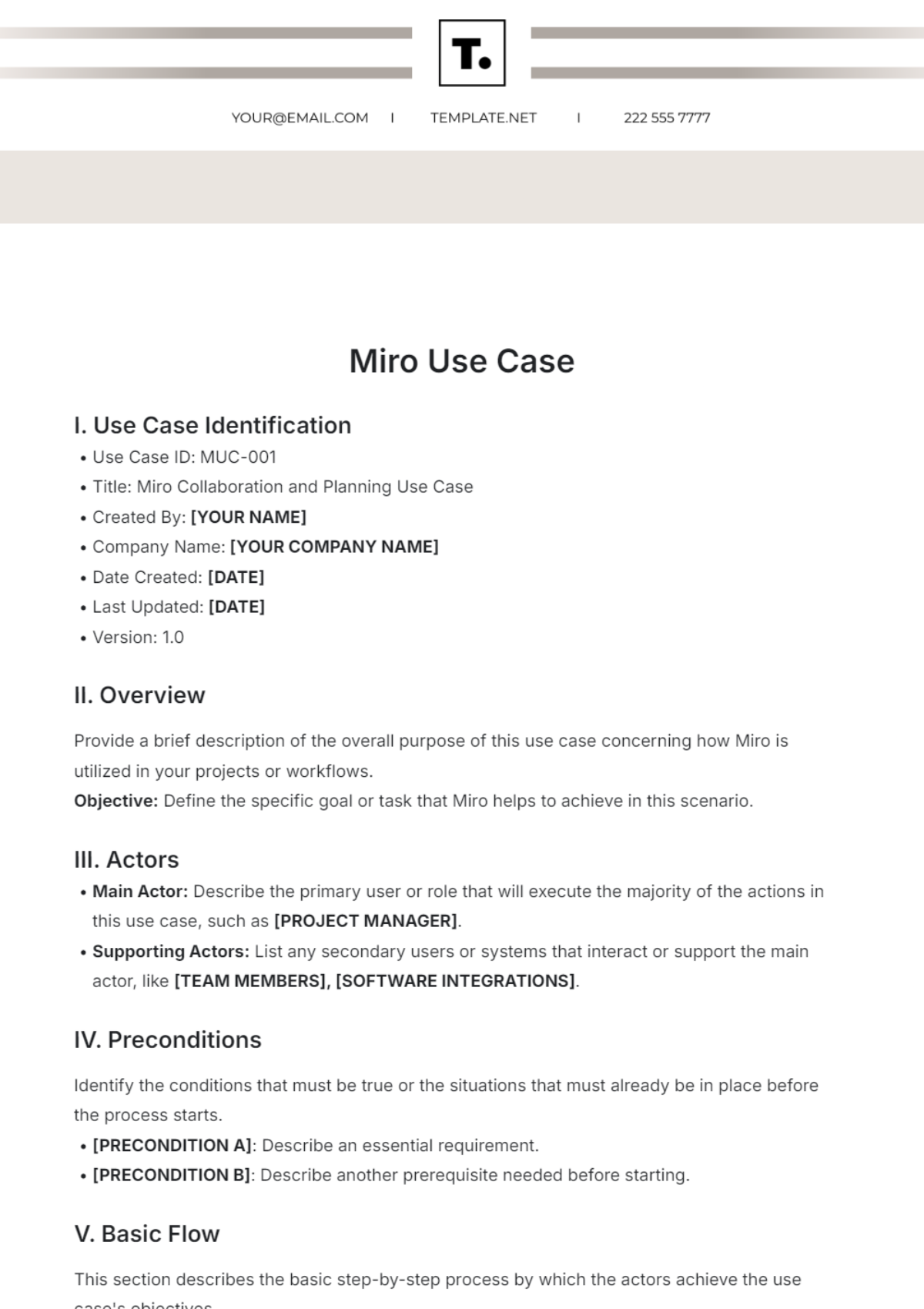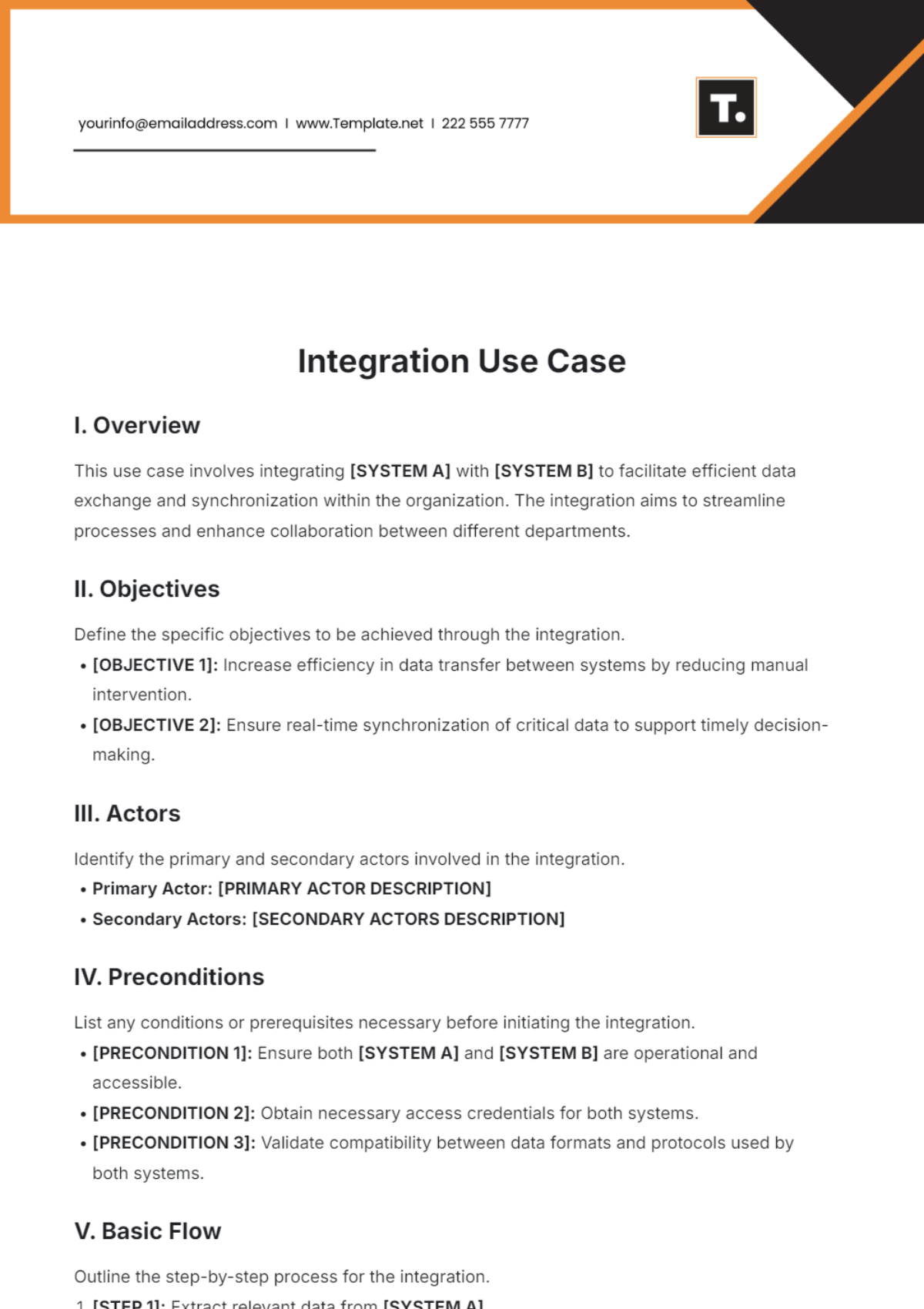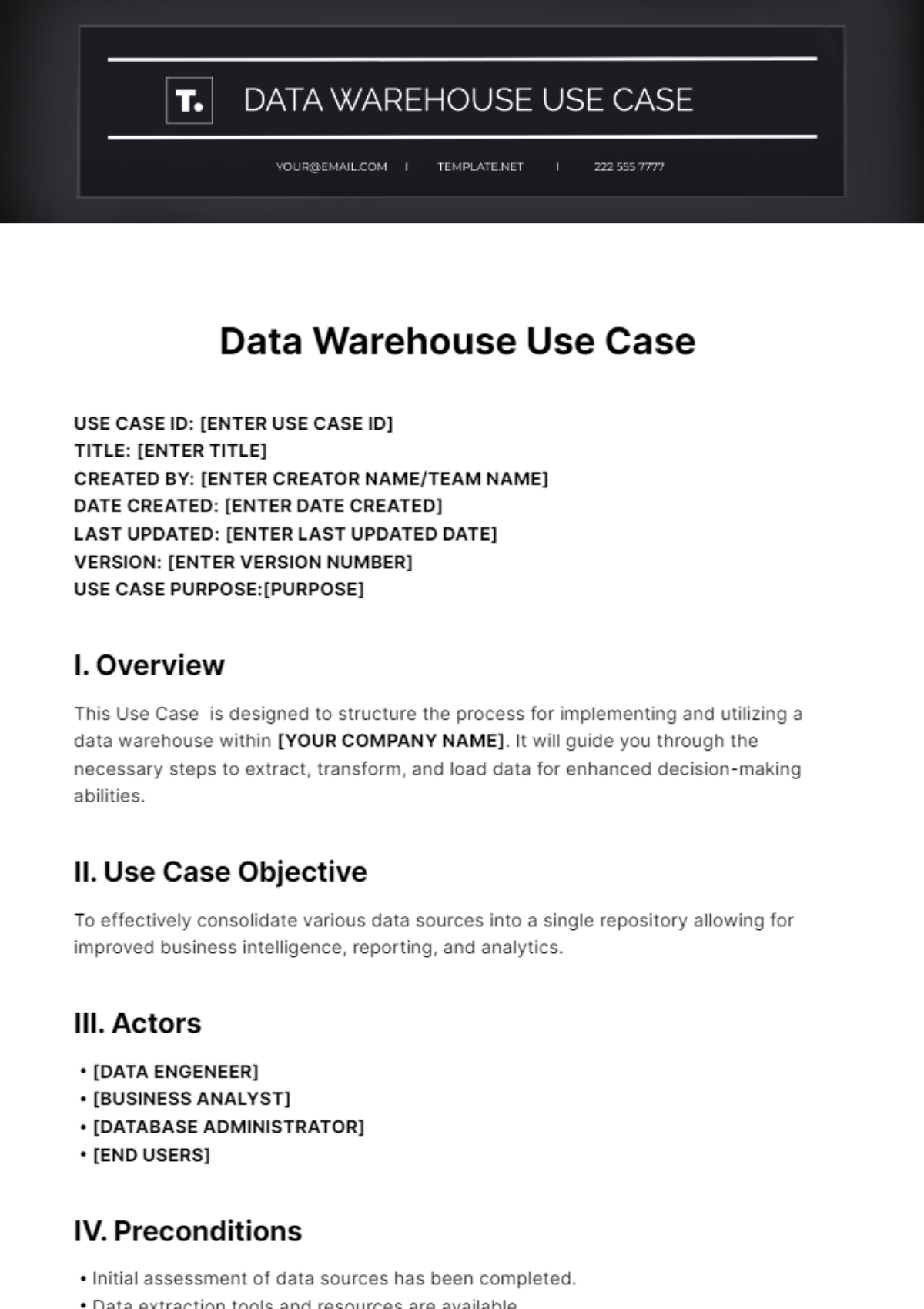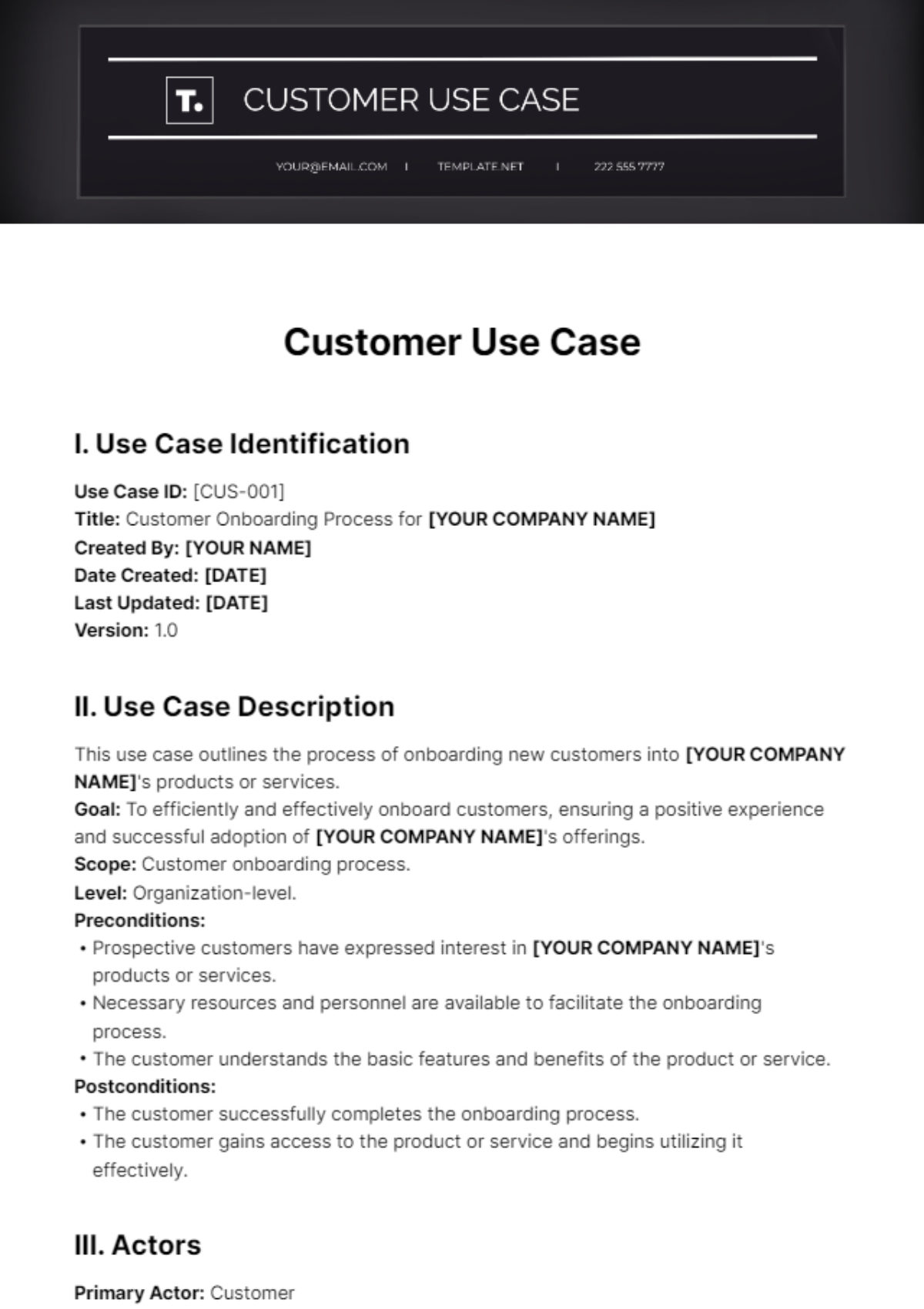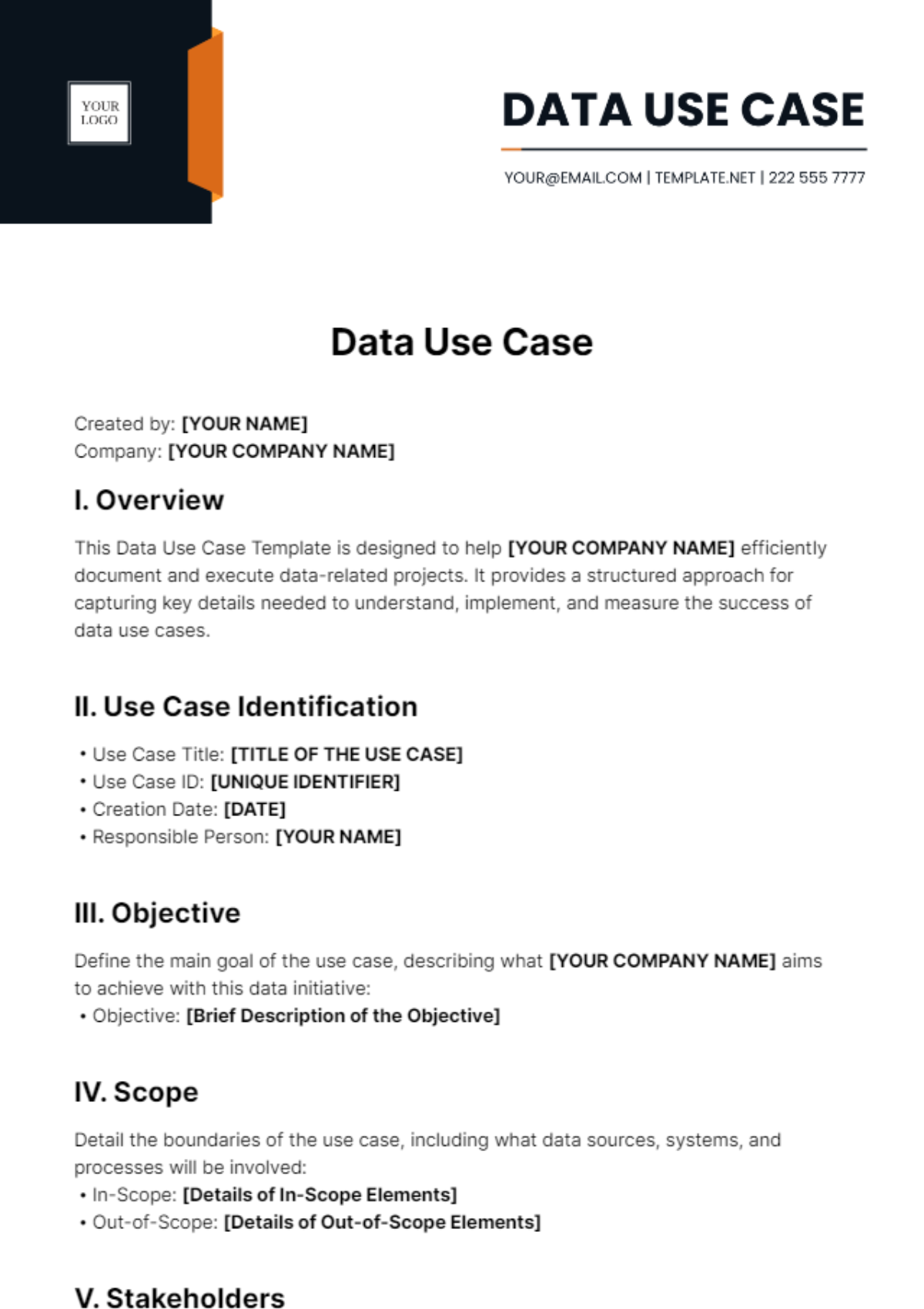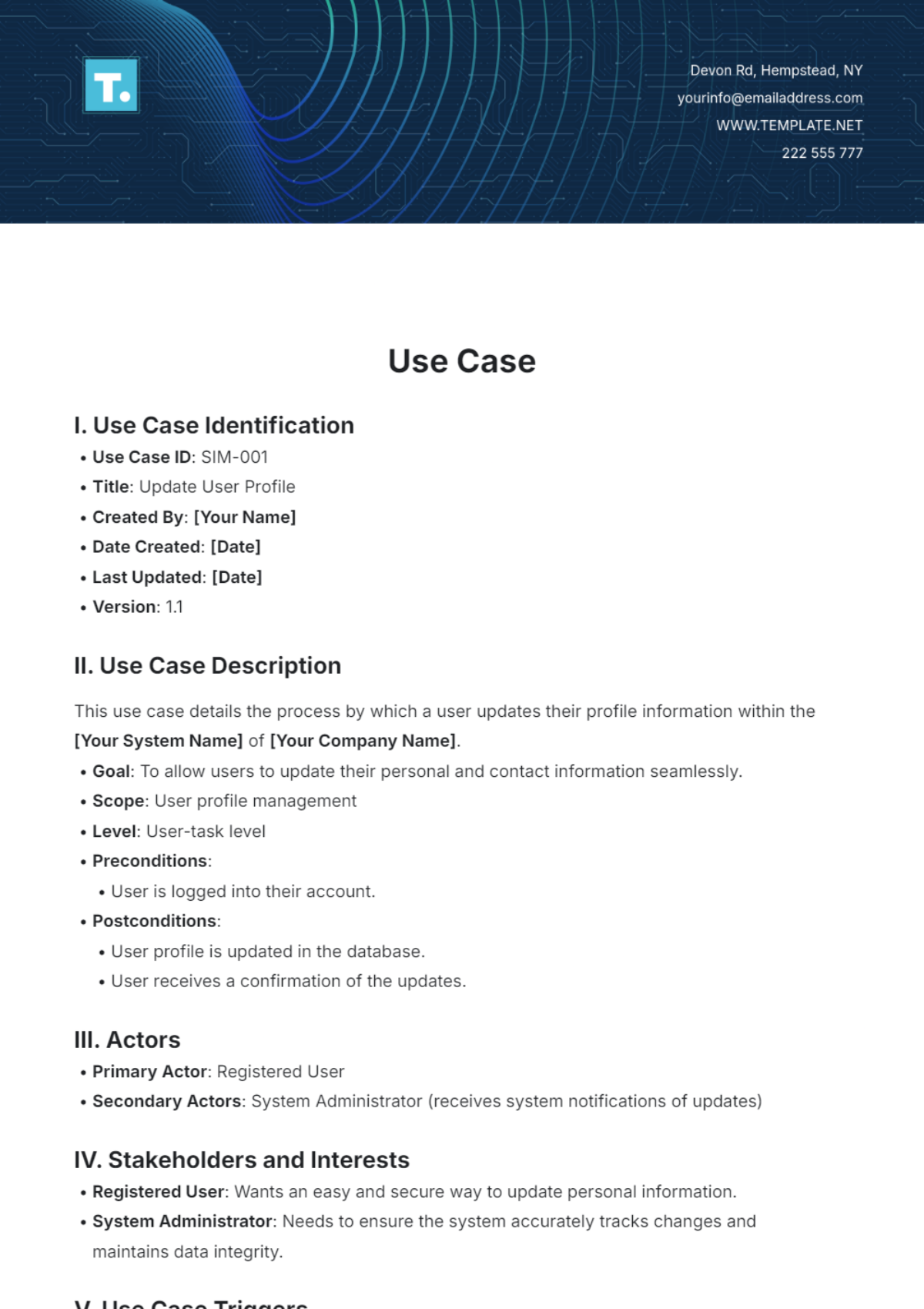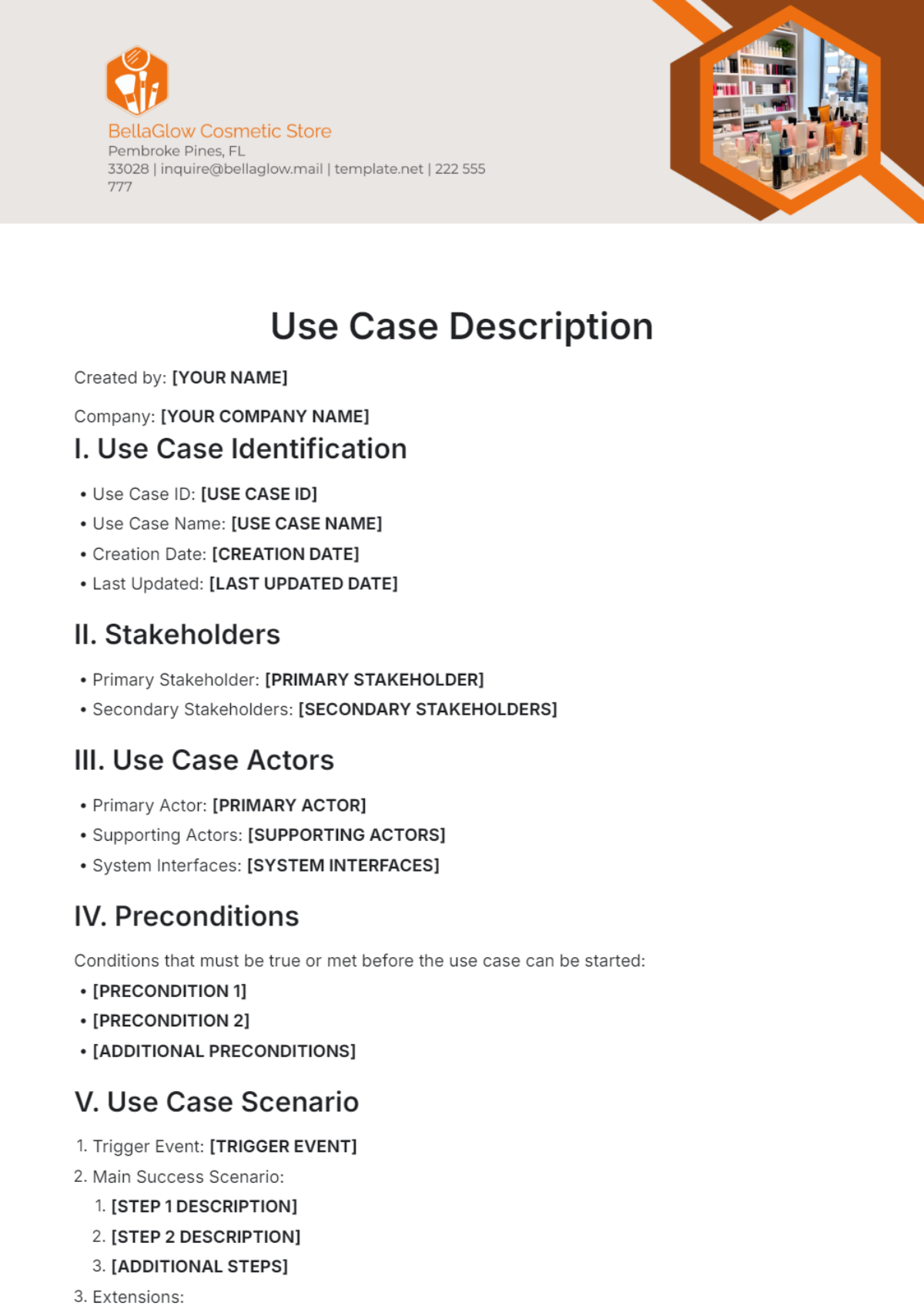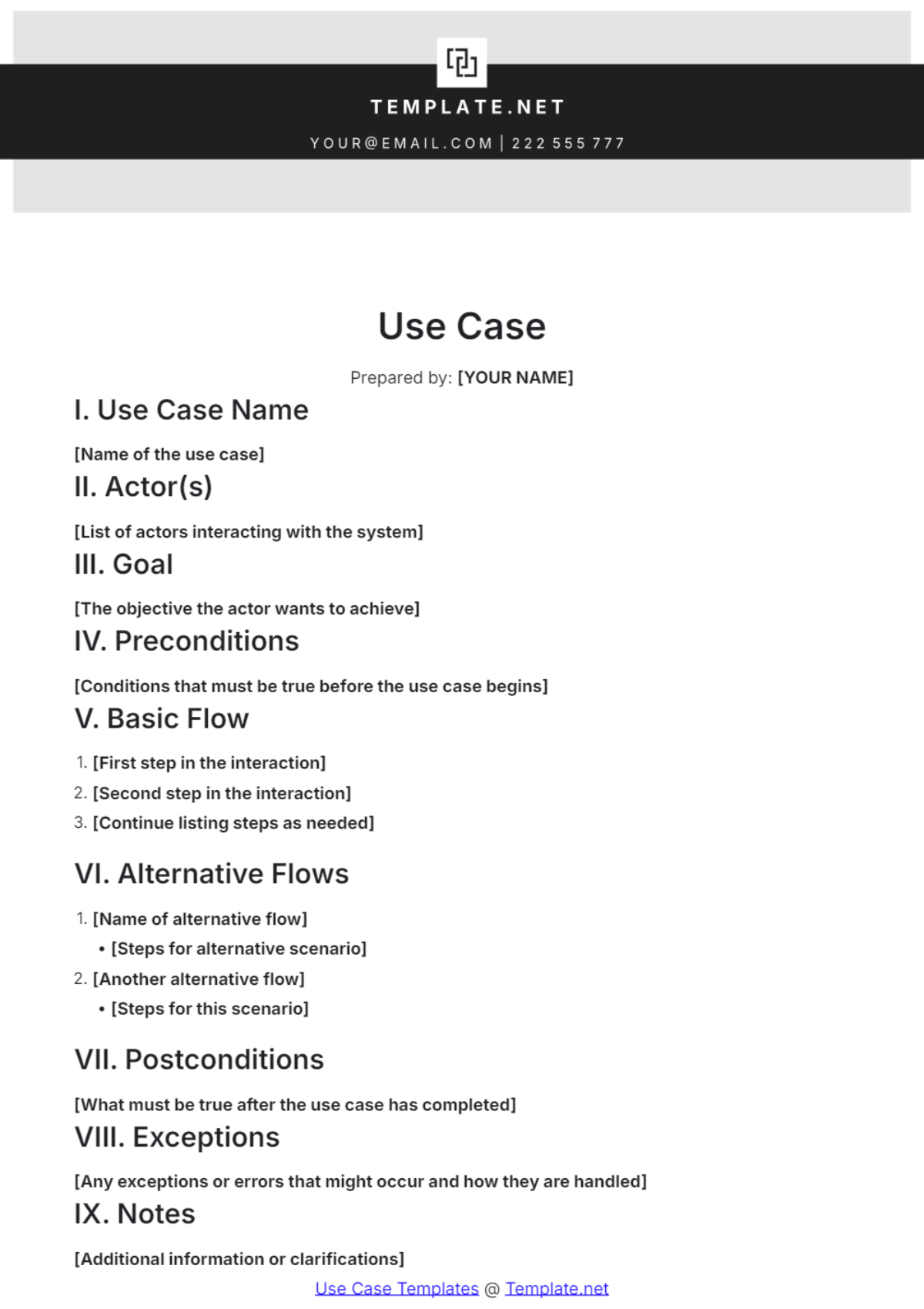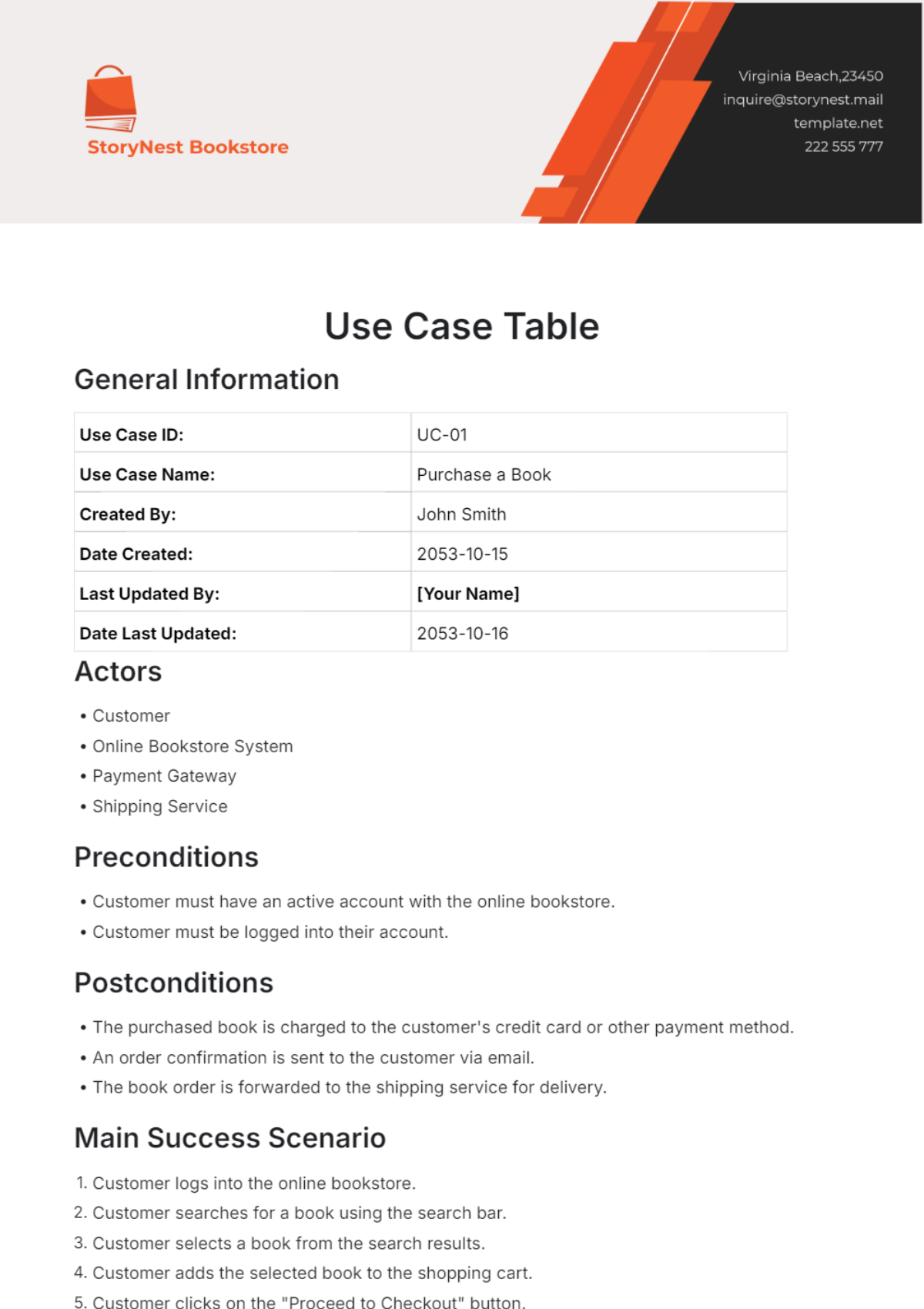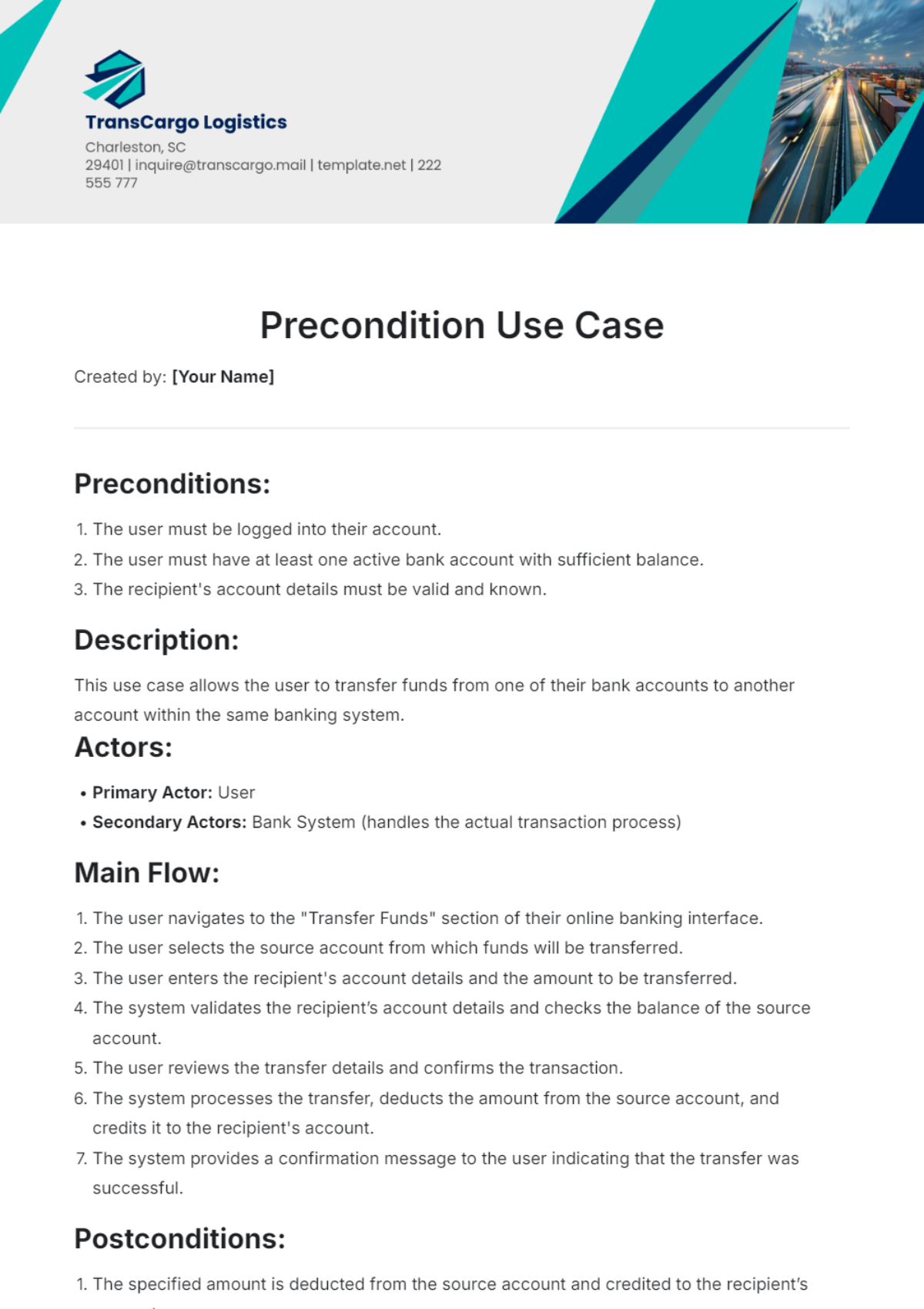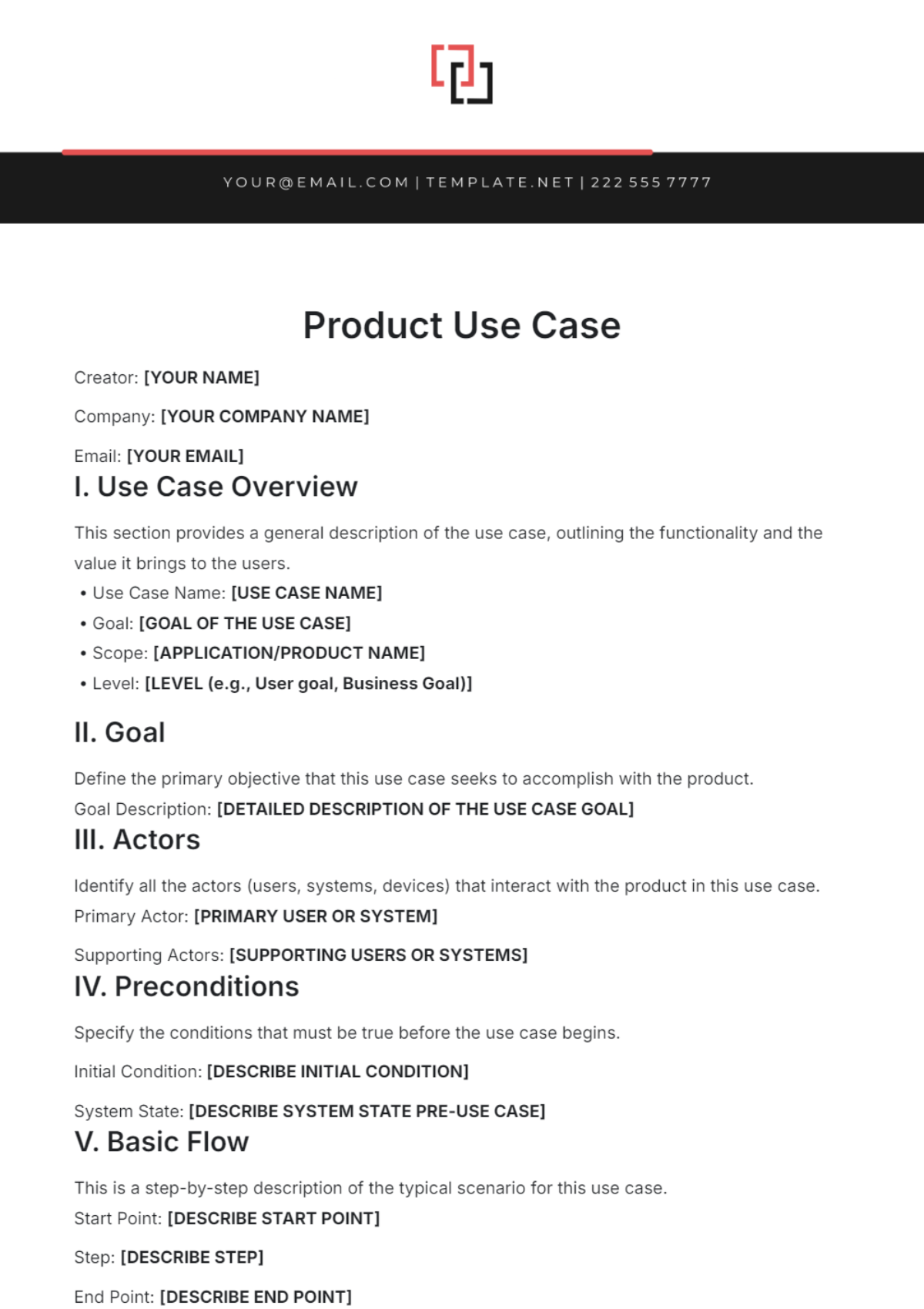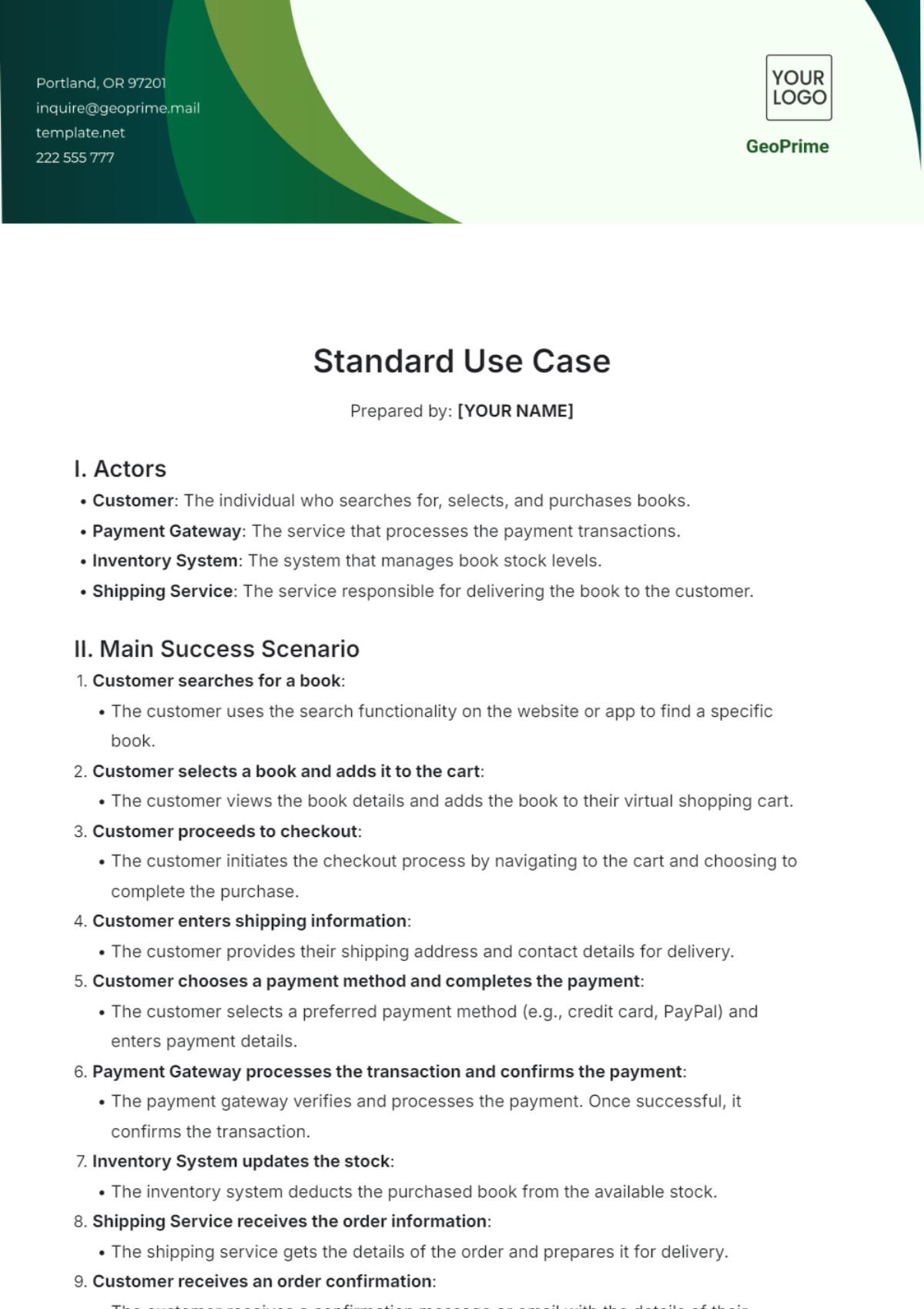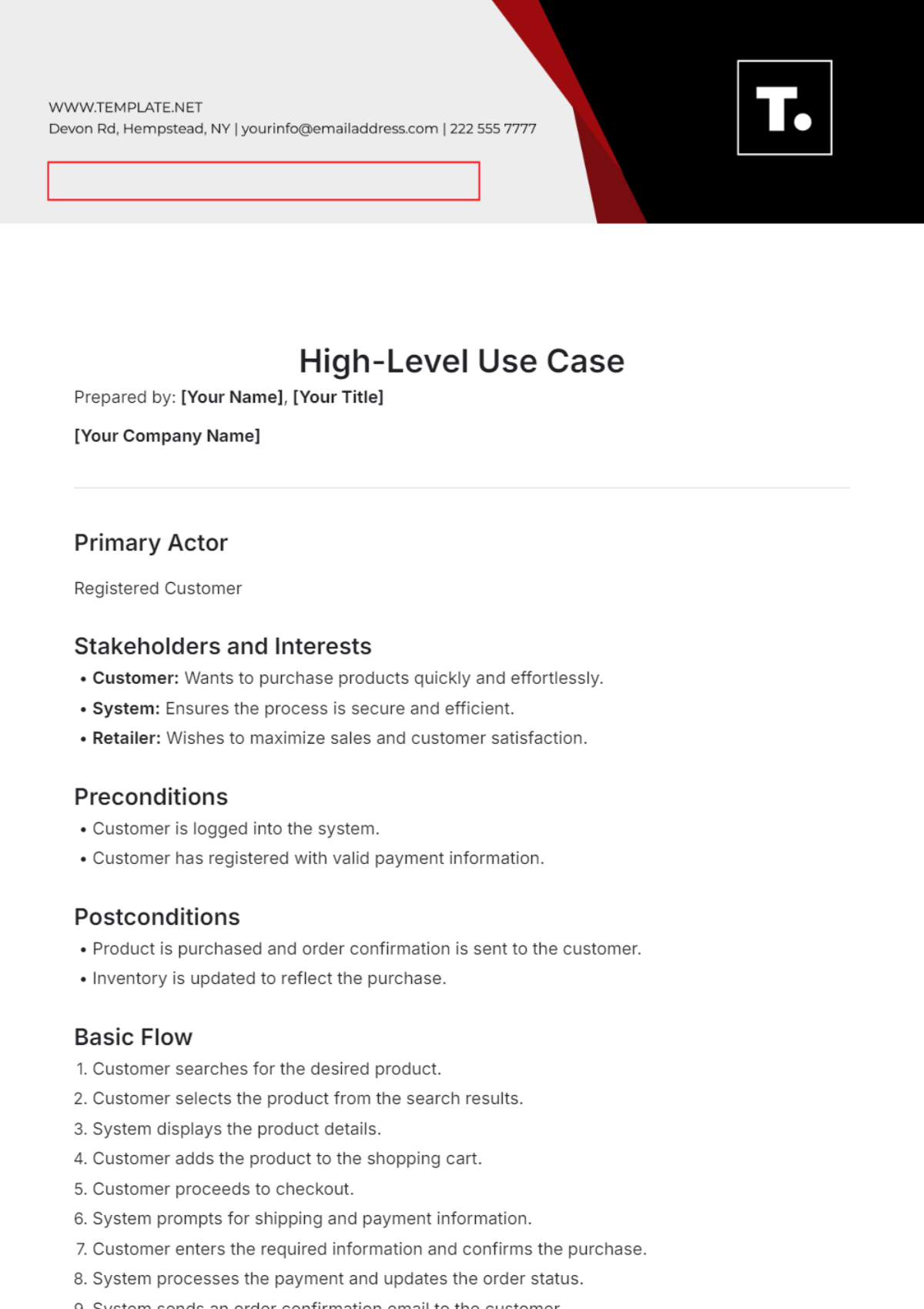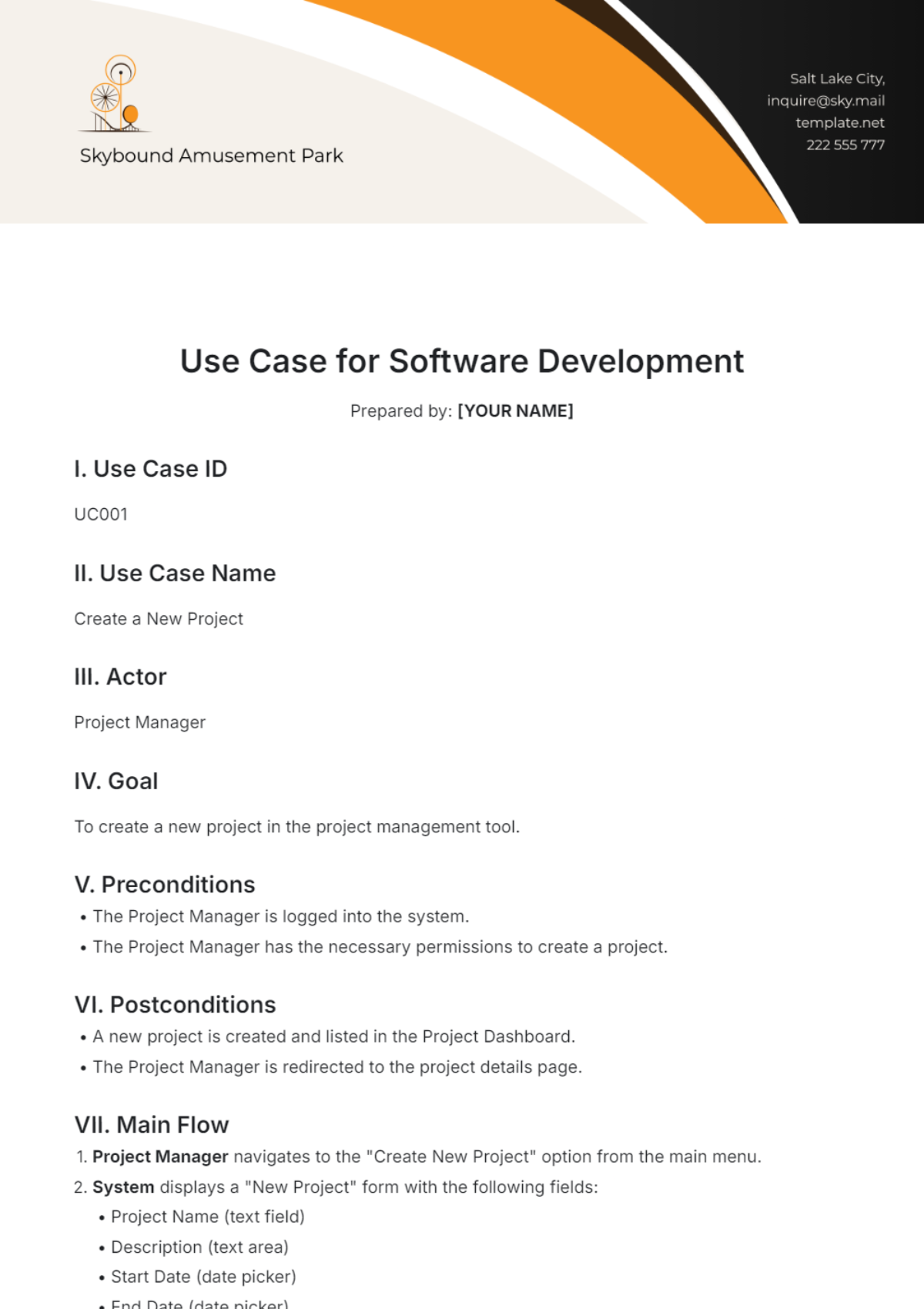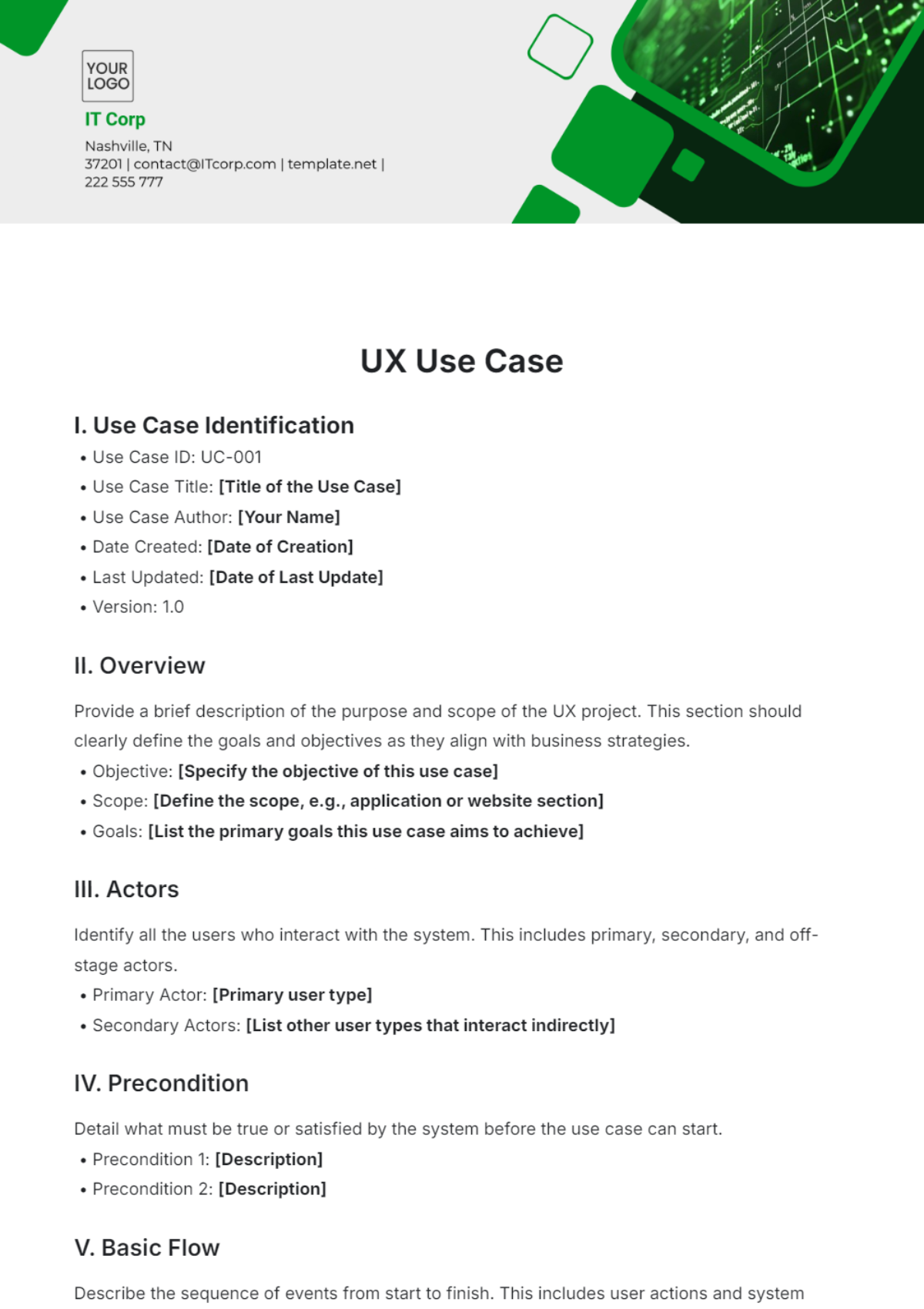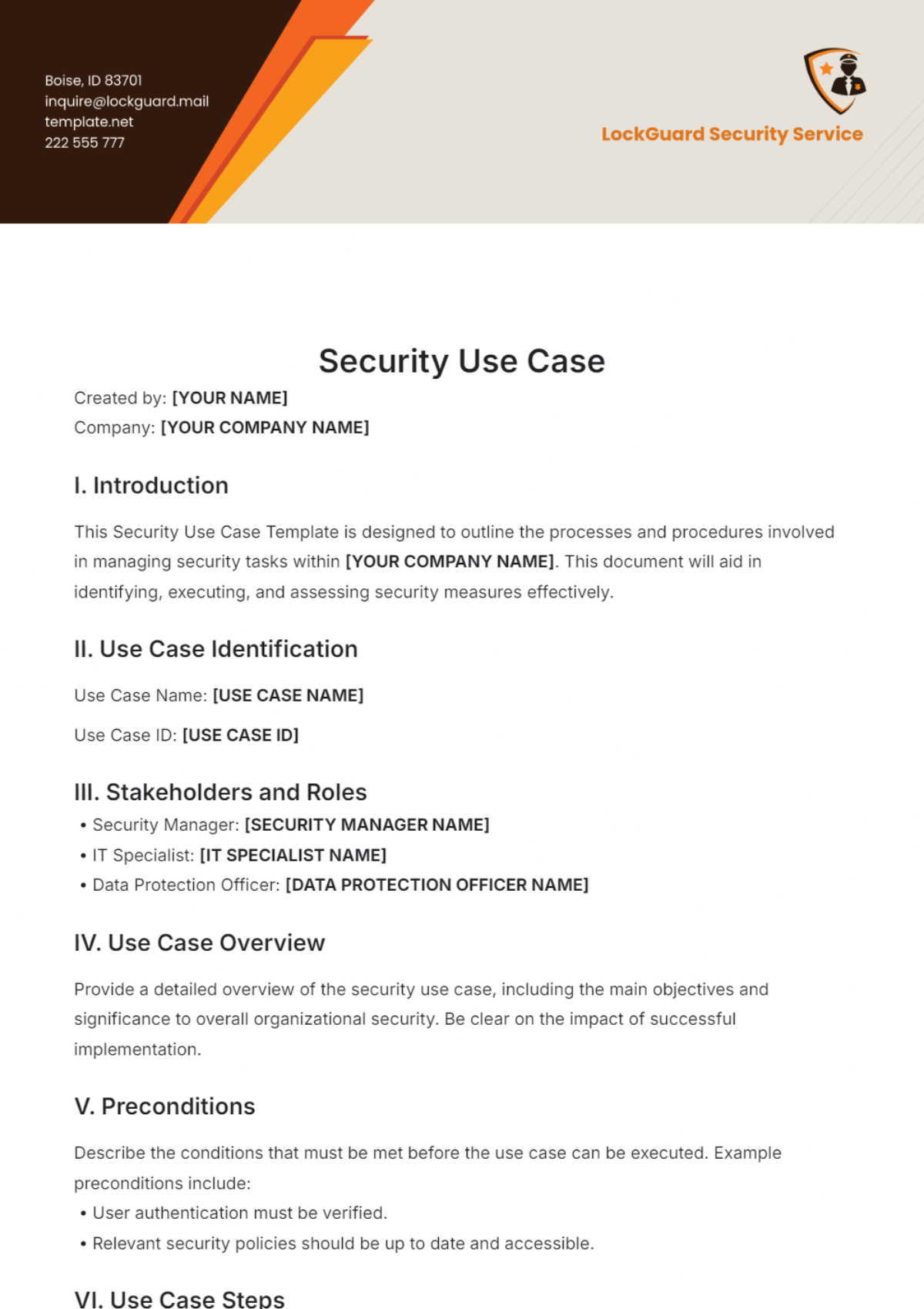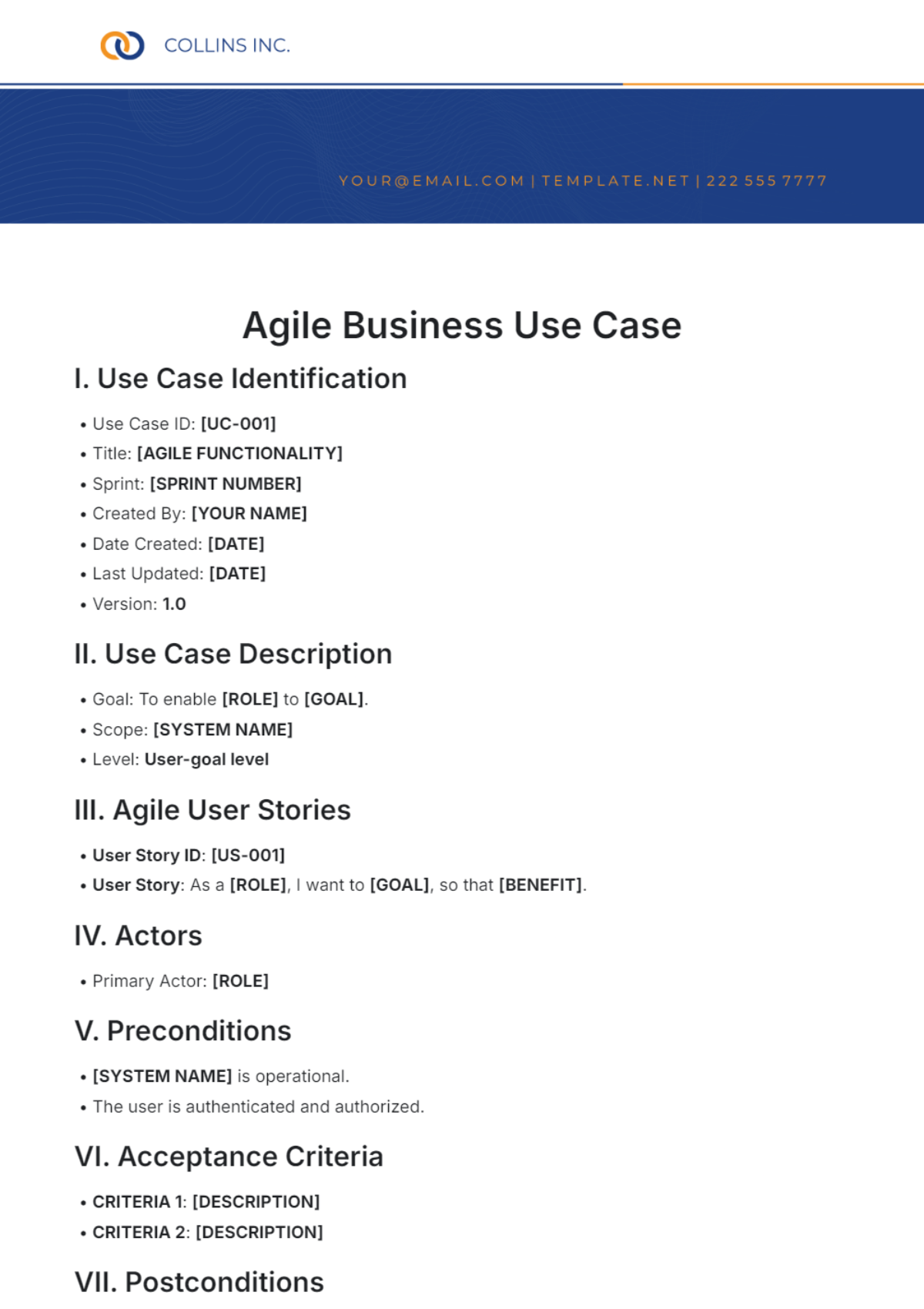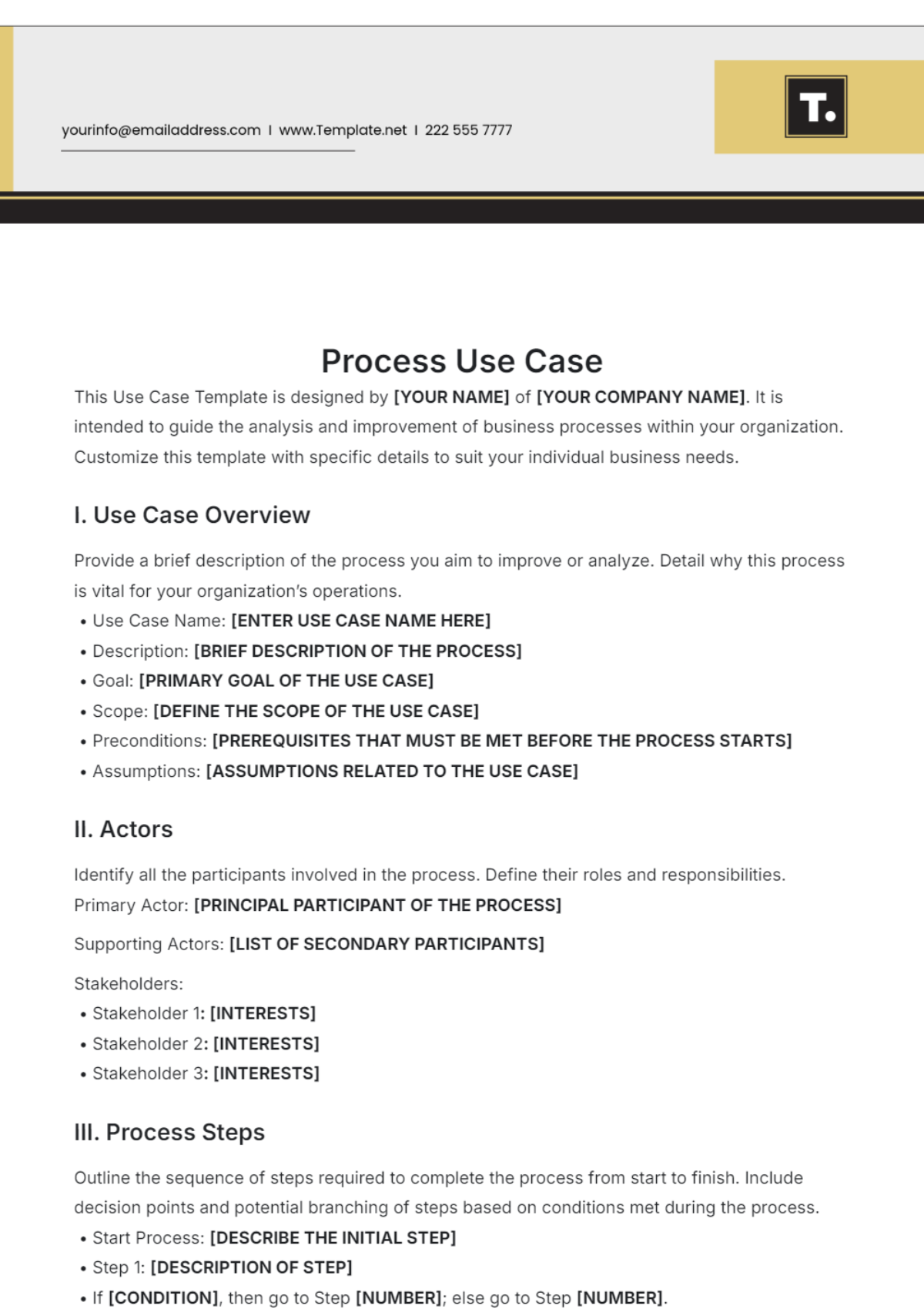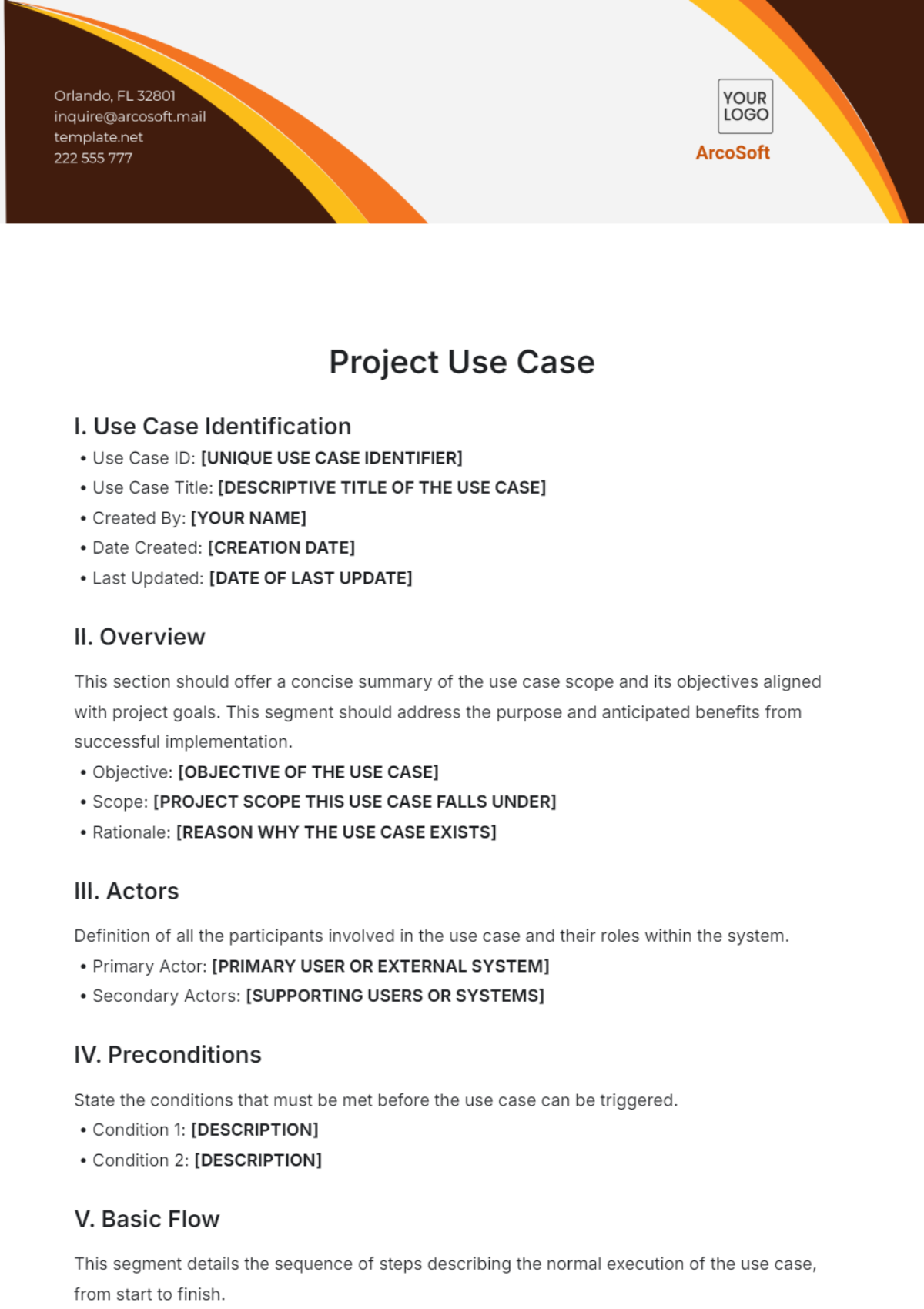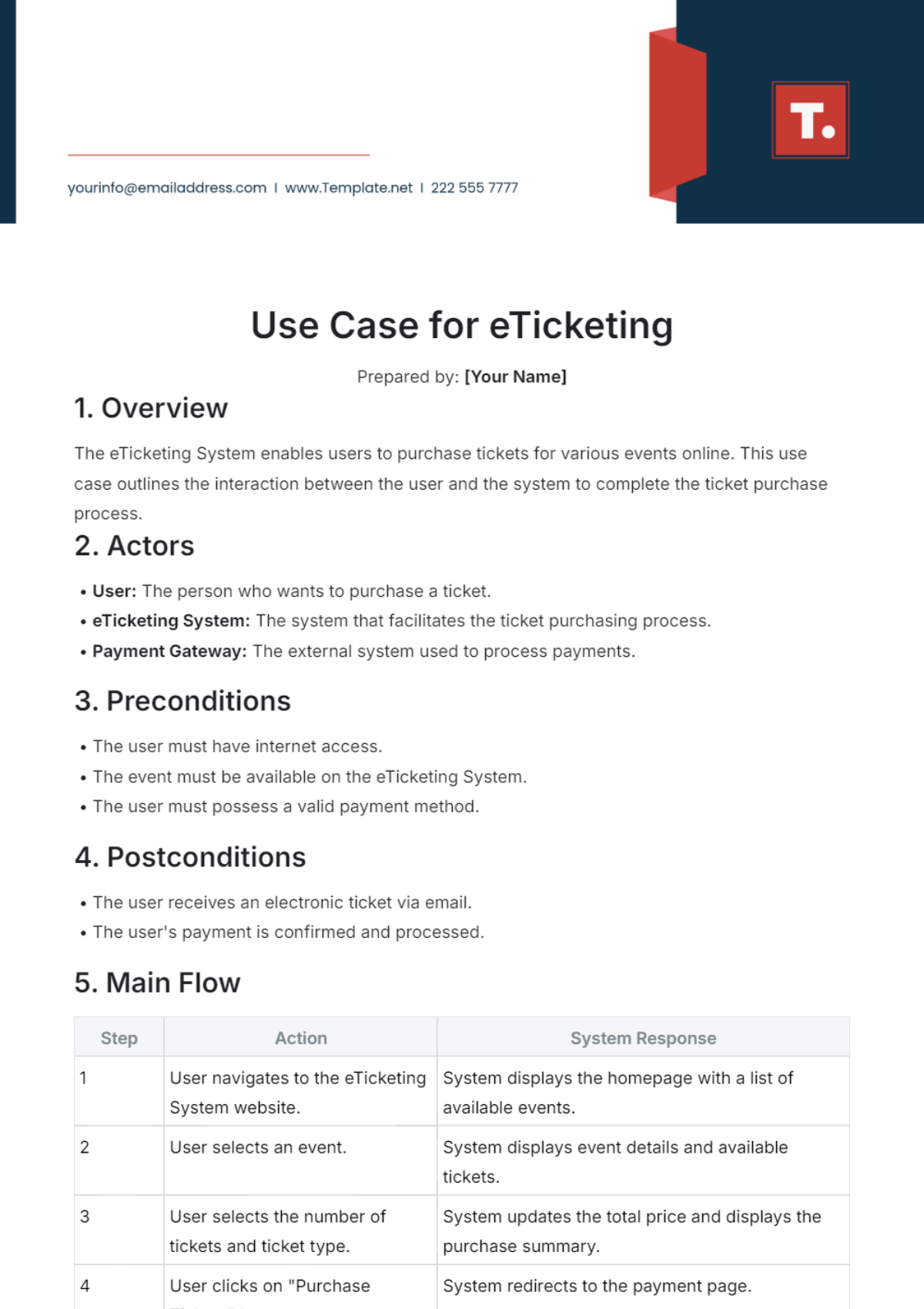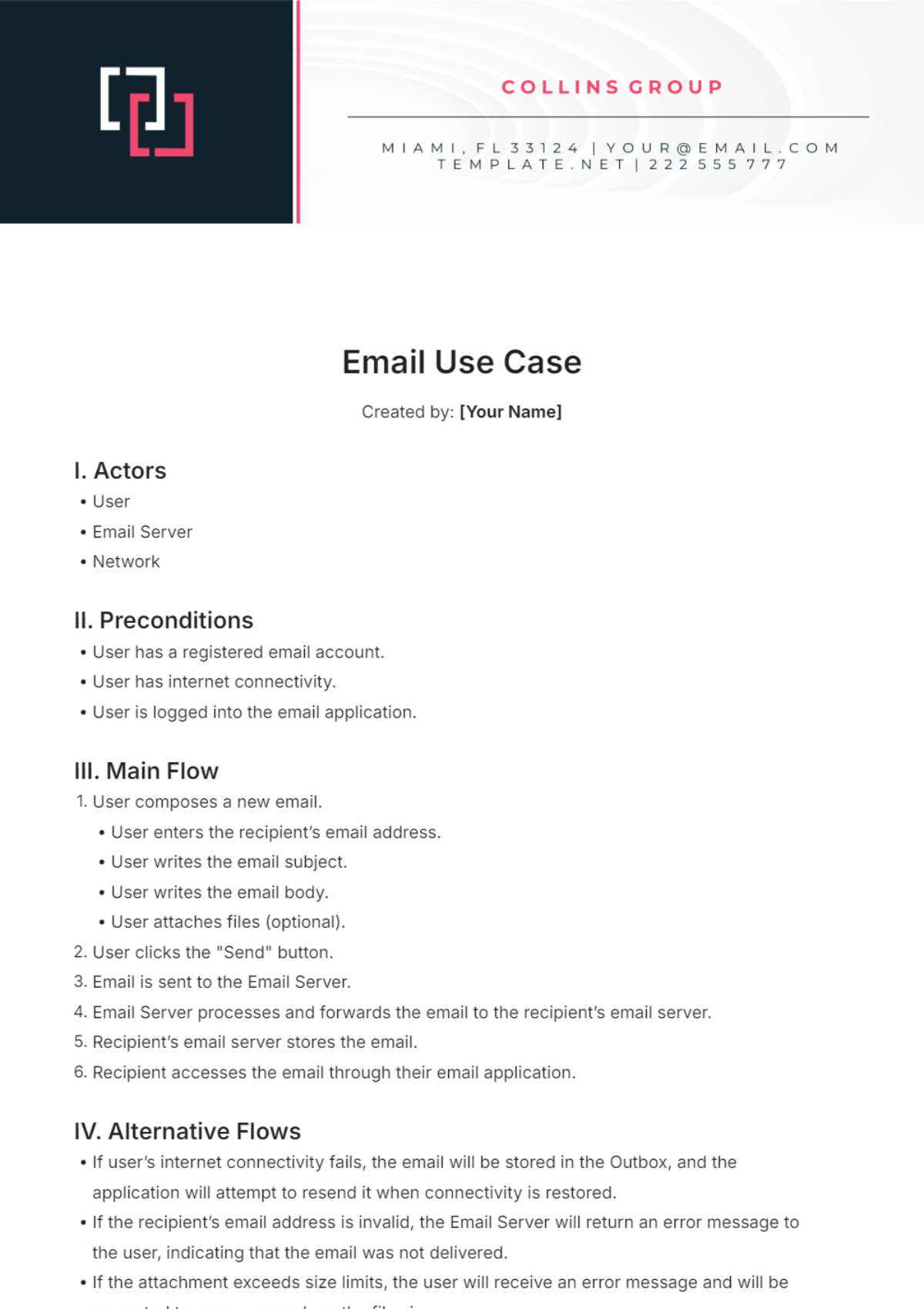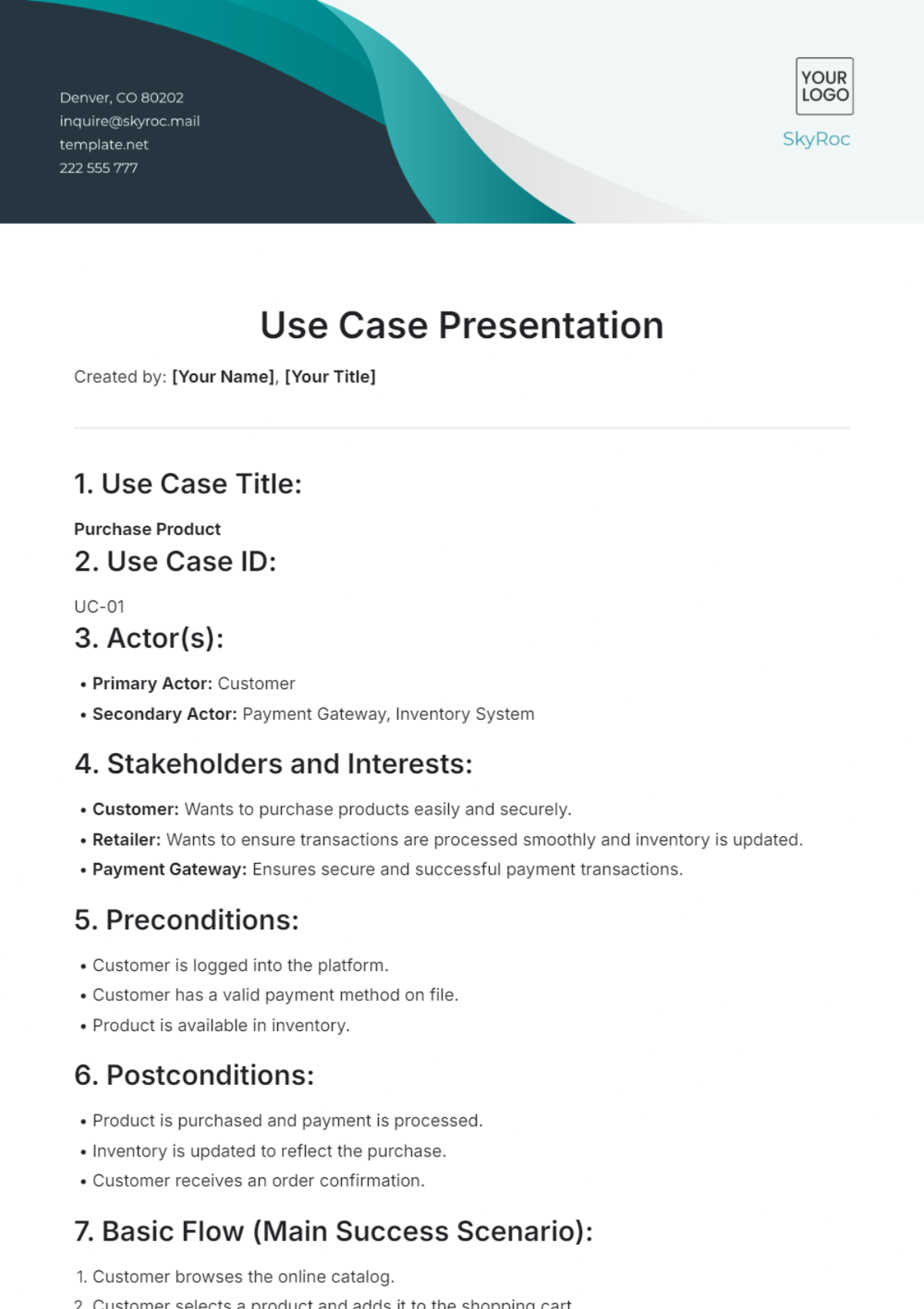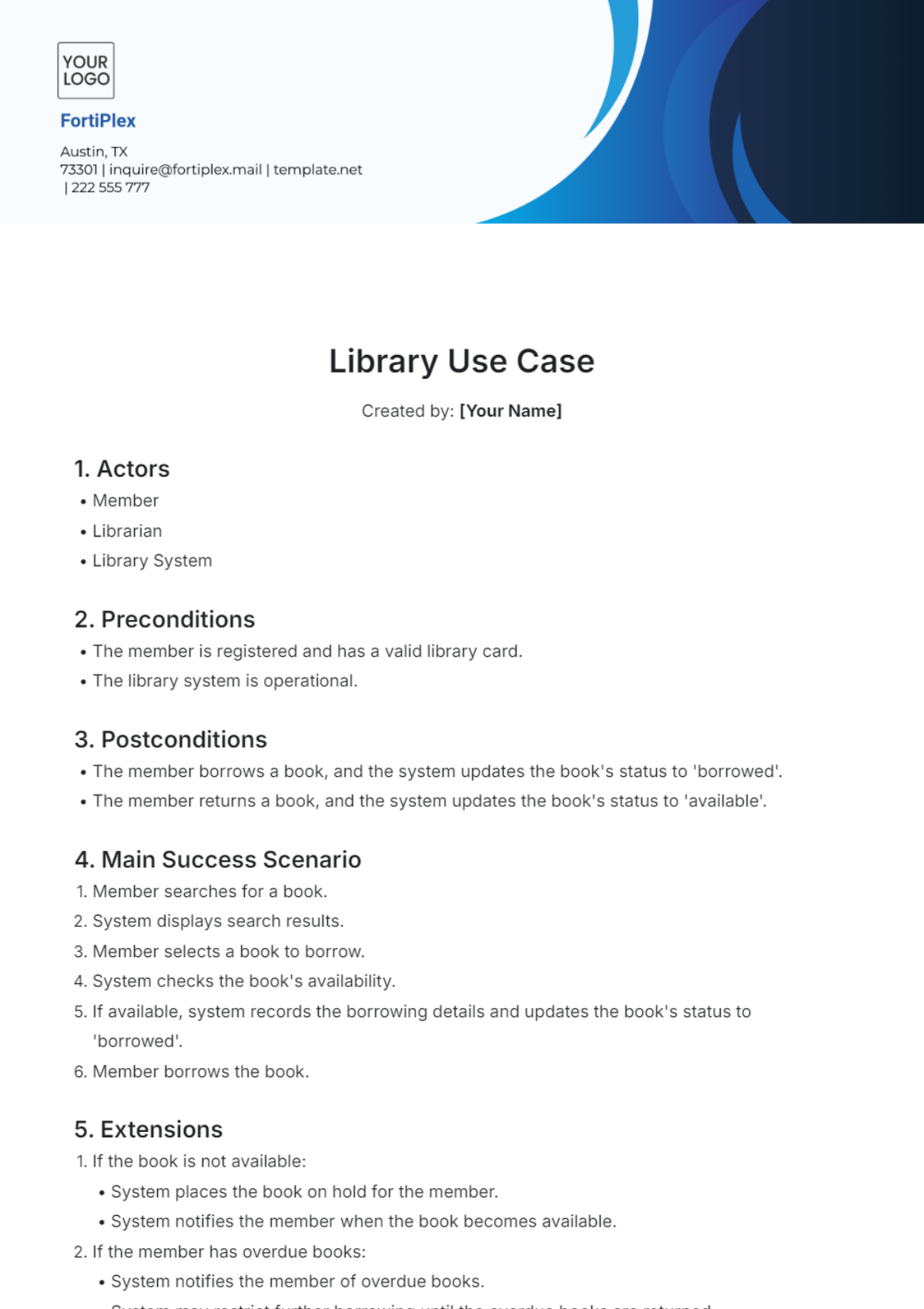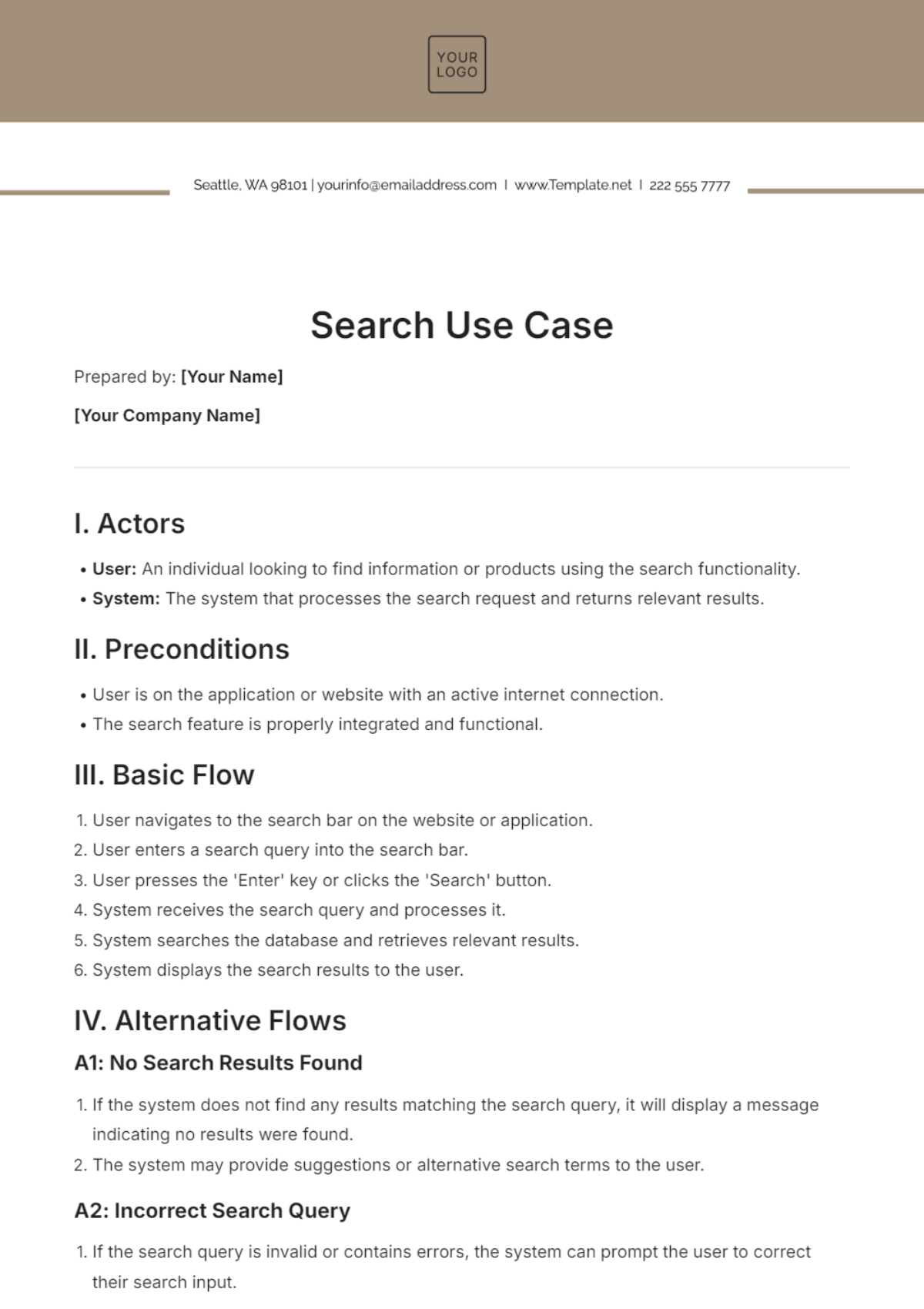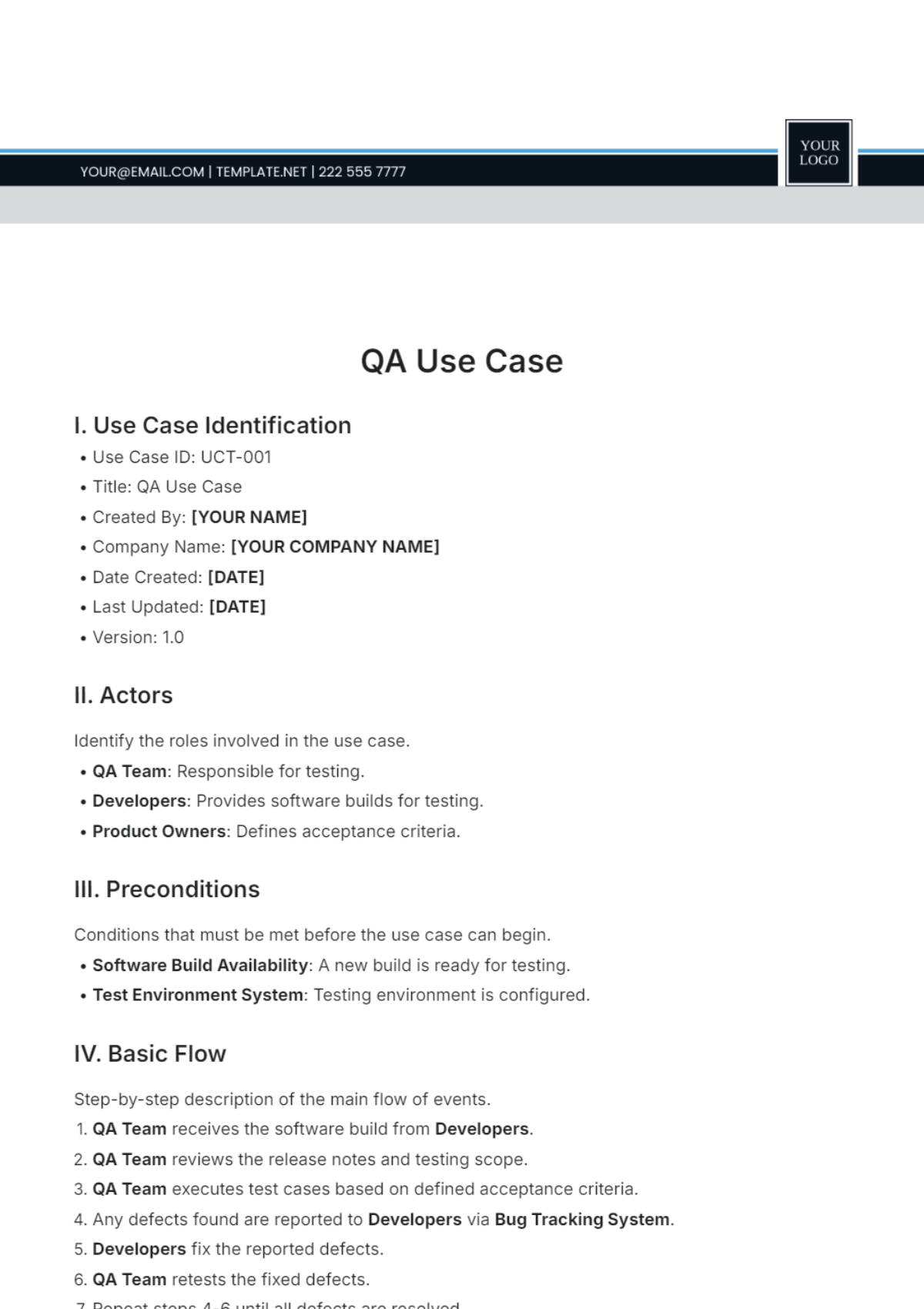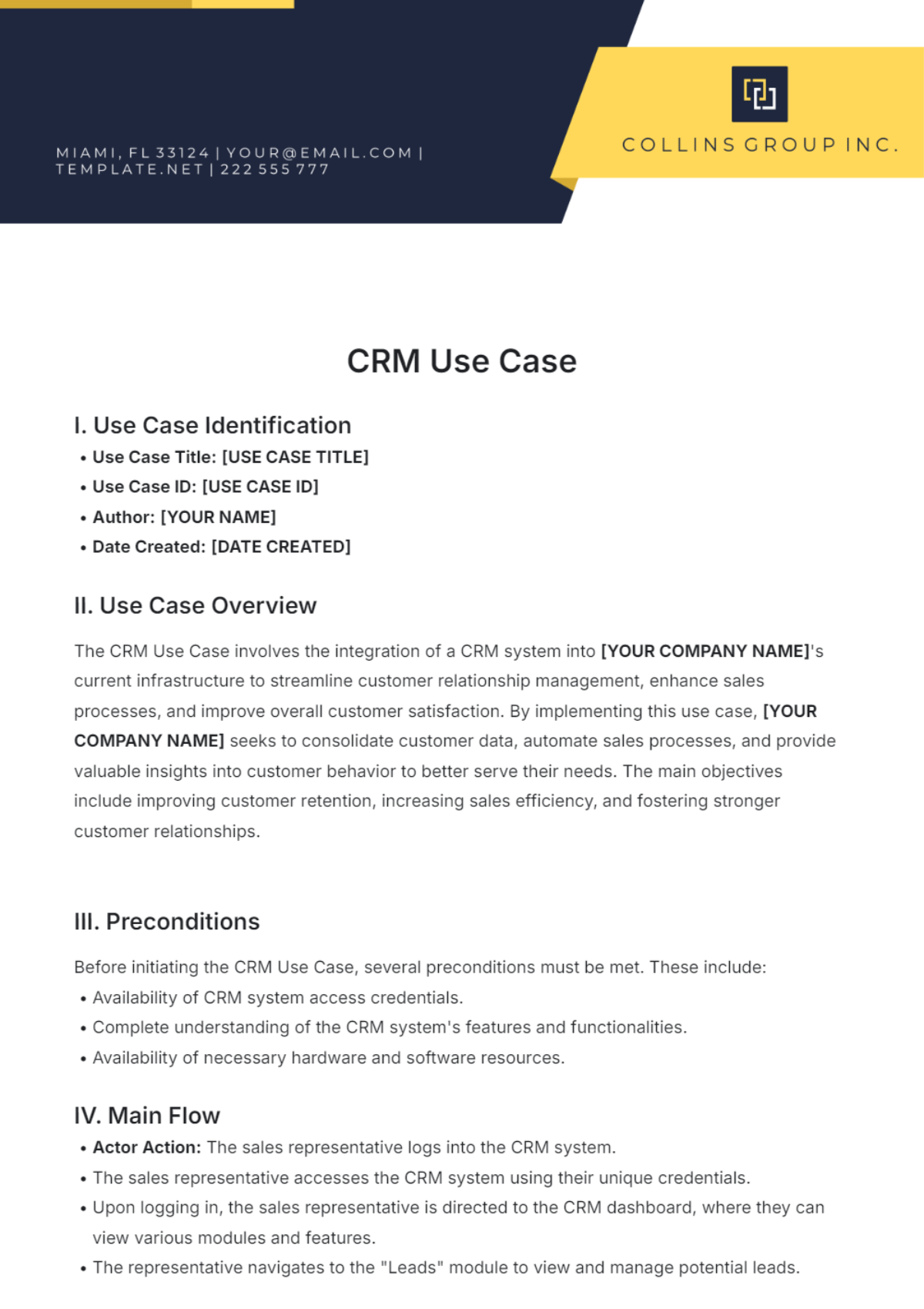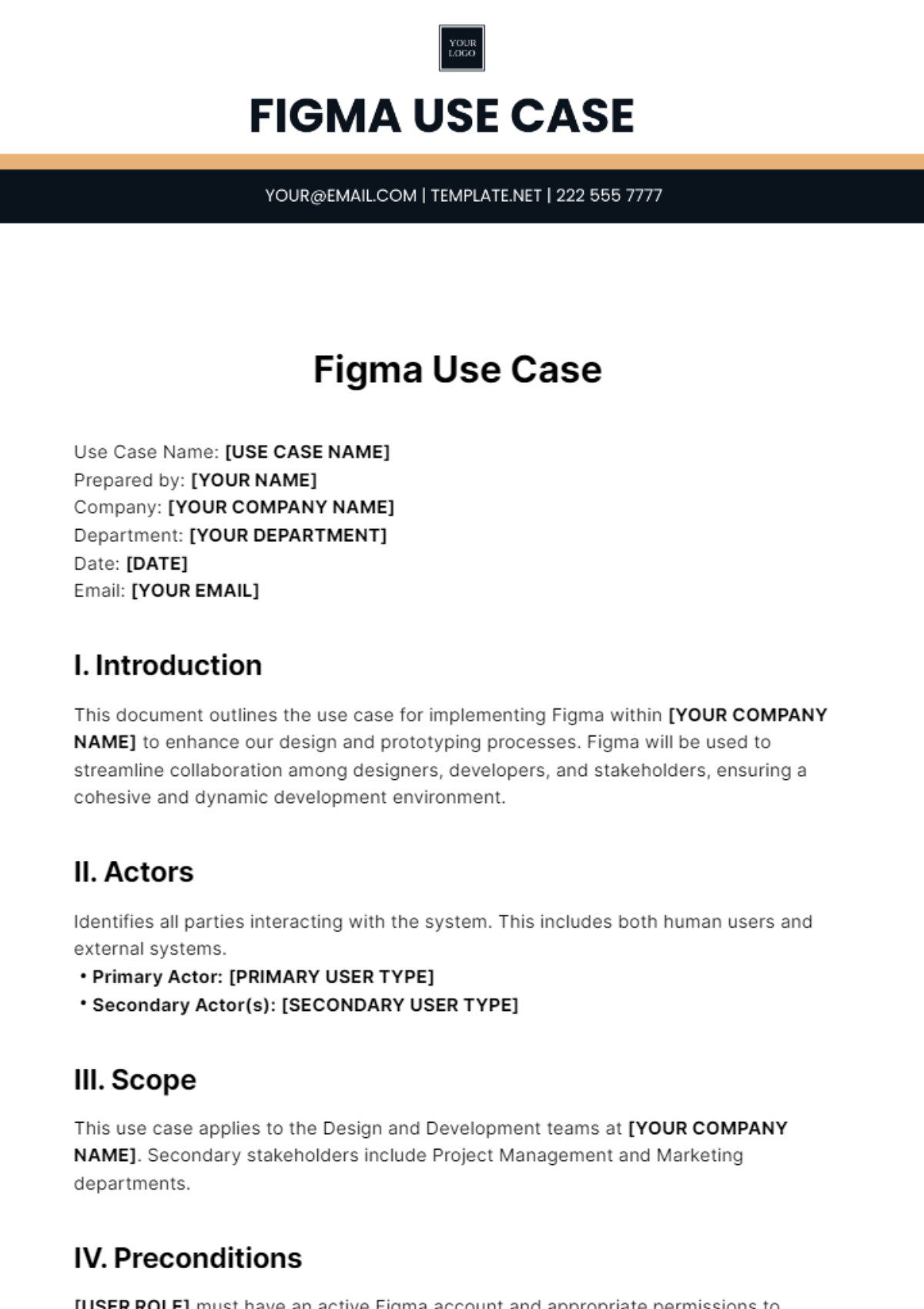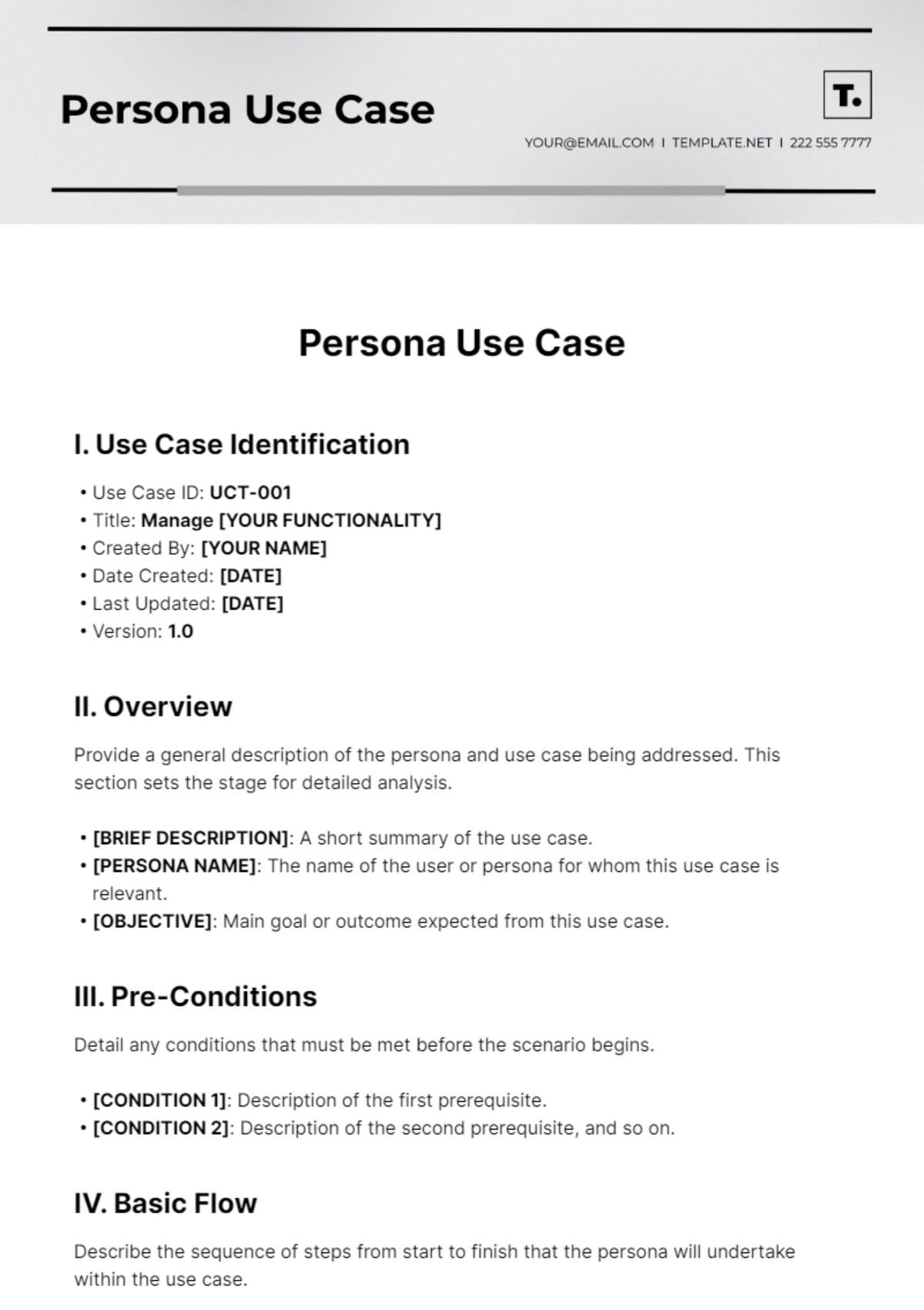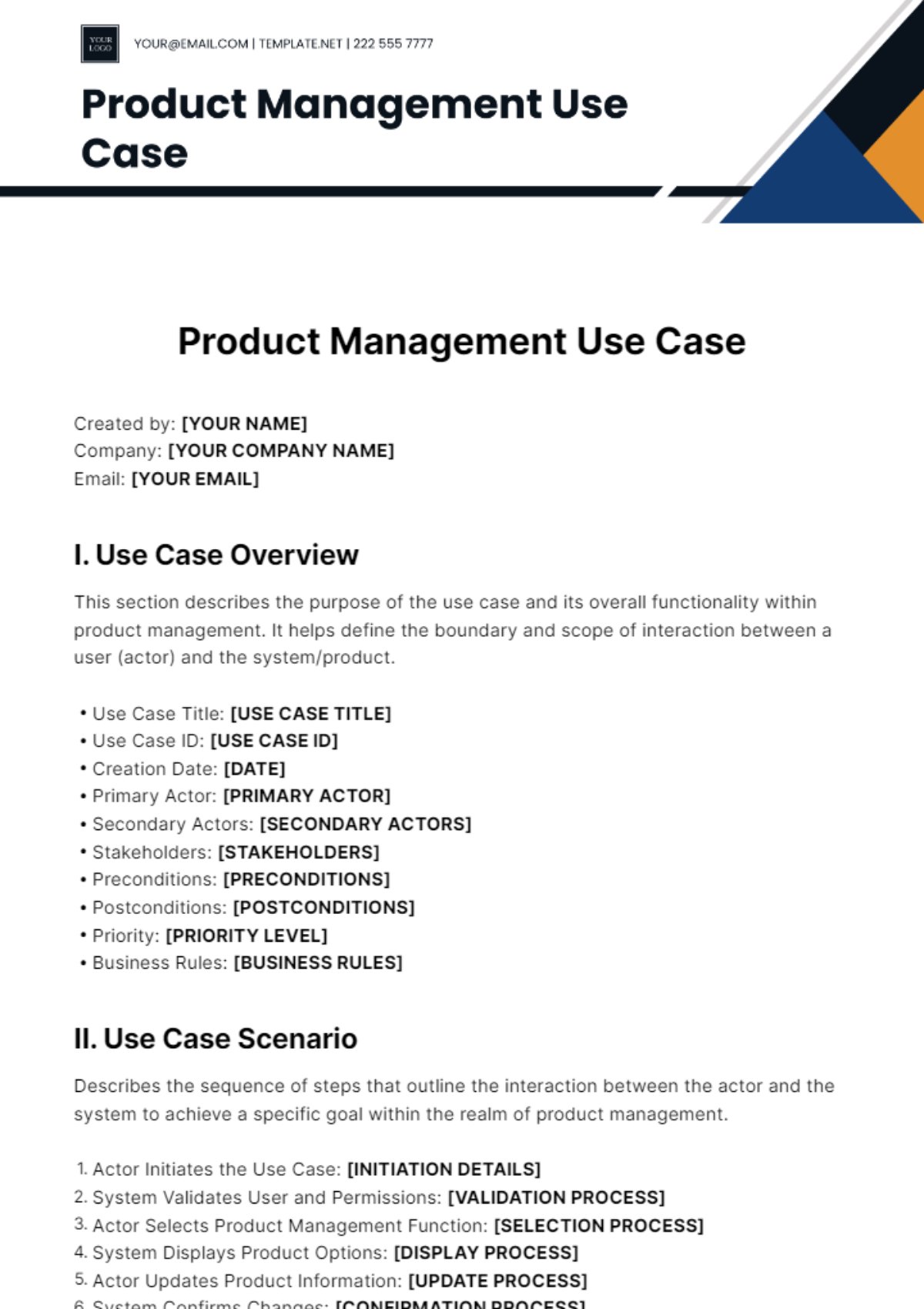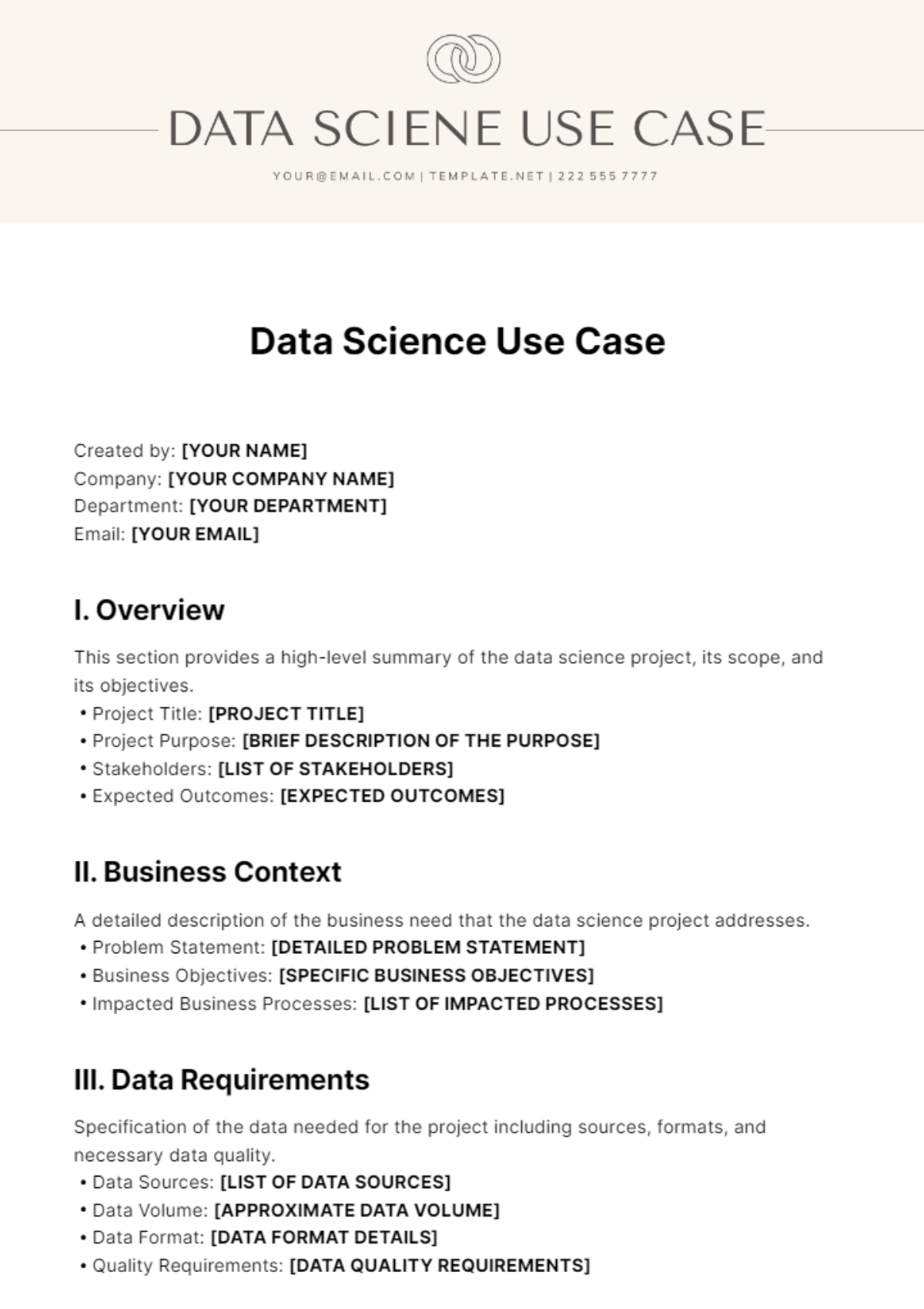Miro Use Case
I. Use Case Identification
Use Case ID: MUC-001
Title: Miro Collaboration and Planning Use Case
Created By: [YOUR NAME]
Company Name: [YOUR COMPANY NAME]
Date Created: [DATE]
Last Updated: [DATE]
Version: 1.0
II. Overview
Provide a brief description of the overall purpose of this use case concerning how Miro is utilized in your projects or workflows.
Objective: Define the specific goal or task that Miro helps to achieve in this scenario.
III. Actors
Main Actor: Describe the primary user or role that will execute the majority of the actions in this use case, such as [PROJECT MANAGER].
Supporting Actors: List any secondary users or systems that interact or support the main actor, like [TEAM MEMBERS], [SOFTWARE INTEGRATIONS].
IV. Preconditions
Identify the conditions that must be true or the situations that must already be in place before the process starts.
[PRECONDITION A]: Describe an essential requirement.
[PRECONDITION B]: Describe another prerequisite needed before starting.
V. Basic Flow
This section describes the basic step-by-step process by which the actors achieve the use case's objectives.
Start Miro Session: Instructions on initial setup or meeting start.
Collaborate on Task: Details on how collaboration is typically conducted within Miro, focusing on specific features like board creation, real-time editing, etc.
Use of Tools: Specify which Miro tools are used, for example, sticky notes, shapes, frames, etc., to facilitate project needs.
Save and Share Outputs: Describe the process for saving work and sharing it with stakeholders or team members.
VI. Alternative Flows
Describe any alternative methods or exceptions to the normal flow which may occur during the execution of this use case.
Handling Conflicts: Explain how conflicts or errors are resolved within Miro.
Technical Issues: Describe steps to address potential technical problems like connectivity issues.
VII. Postconditions
What must be true or what state must the system or the products of the workflow be in after the use case is completed.
Documentation: Specification that all changes and contributions are properly documented and saved on Miro.
Review: Detail the necessary steps for reviewing the outcomes of the session and planning future actions.
VIII. Business Rules
Define any organizational or business rules that must be adhered to during this use case.
[BUSINESS RULE A]: Specify a rule.
[BUSINESS RULE B]: Detail another important rule.
IX. Special Requirements
Discuss any special hardware, software, accessibility, or performance requirements that are essential to this use case.
Device Compatibility: List requirements regarding devices that can be used (PC, tablet, smartphone).
Software Requirements: Include necessary software tools or browser compatibility.
X. Assumptions
List any assumptions made during the design of this use case.
[ASSUMPTION A]: State an assumption.
[ASSUMPTION B]: Detail another assumption.
XI. Frequency of Use
Provide an estimate of how frequently this use case is expected to be executed (e.g., daily, weekly, during specific business periods).
XII. Notes and Issues
Record any other notes, observations, or issues detected during the use case scenario for future revision and improvement.
[NOTE/ISSUE A]: Mention a relevant note or issue.
[NOTE/ISSUE B]: Detail another point of concern.


